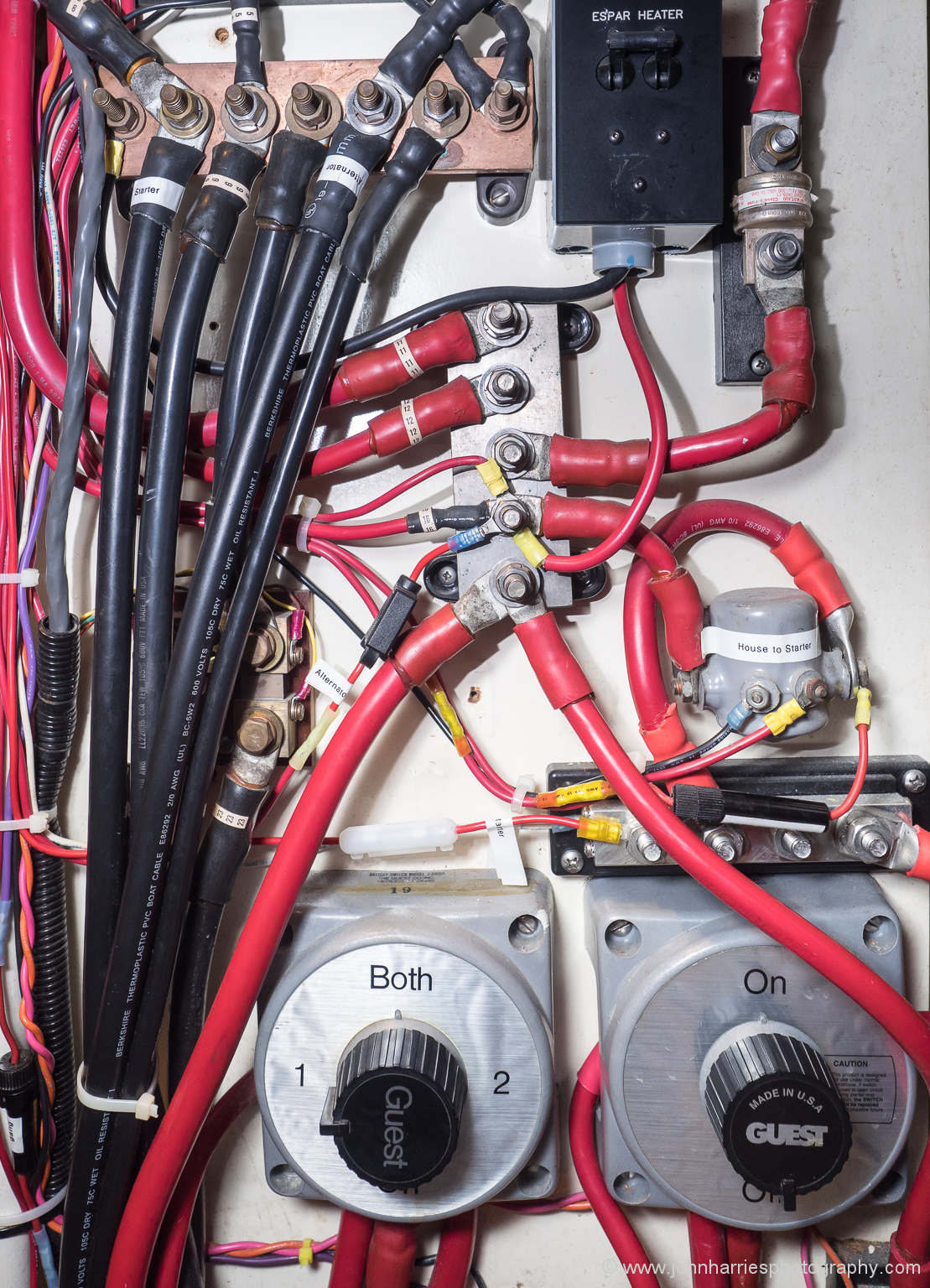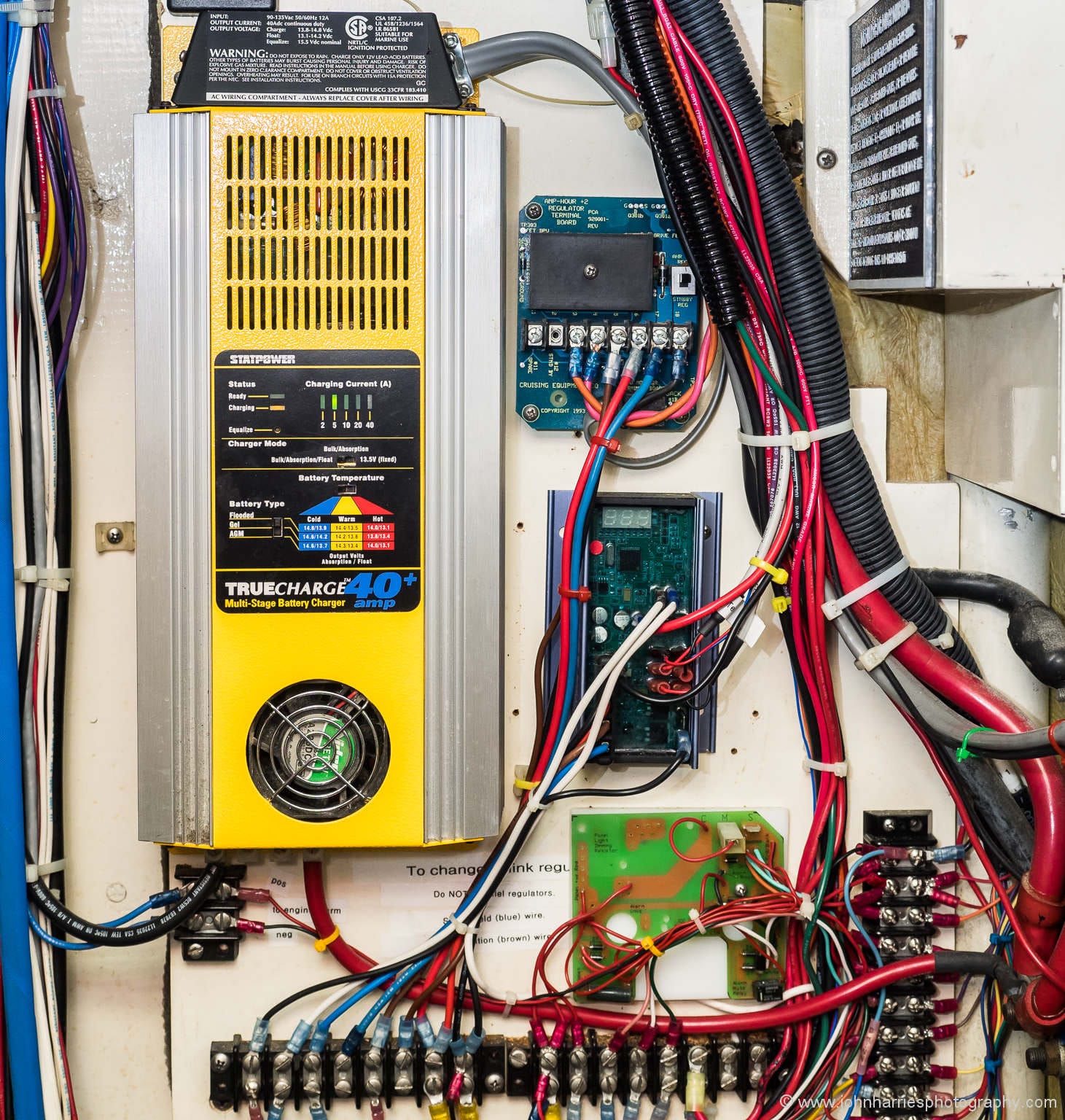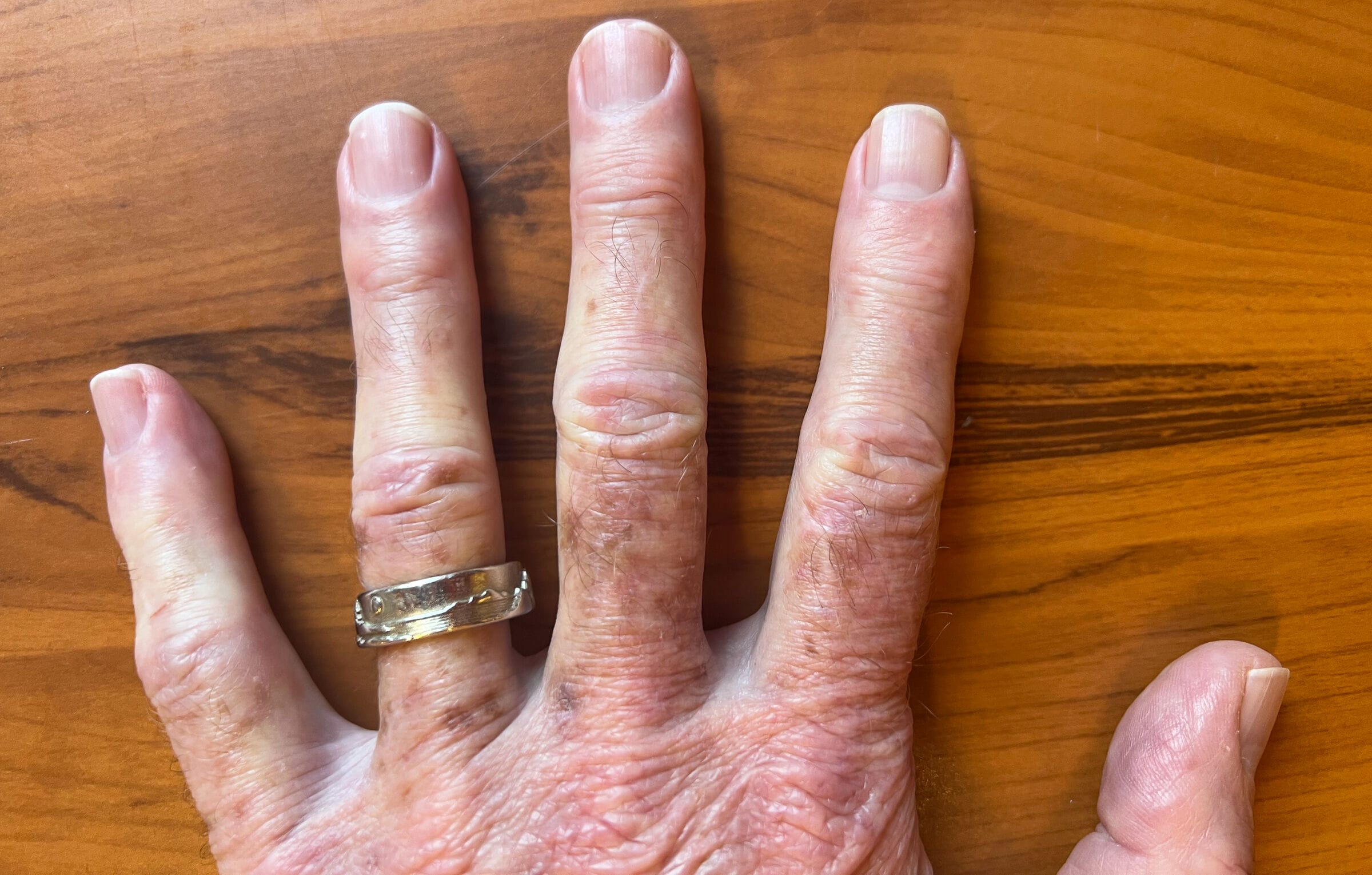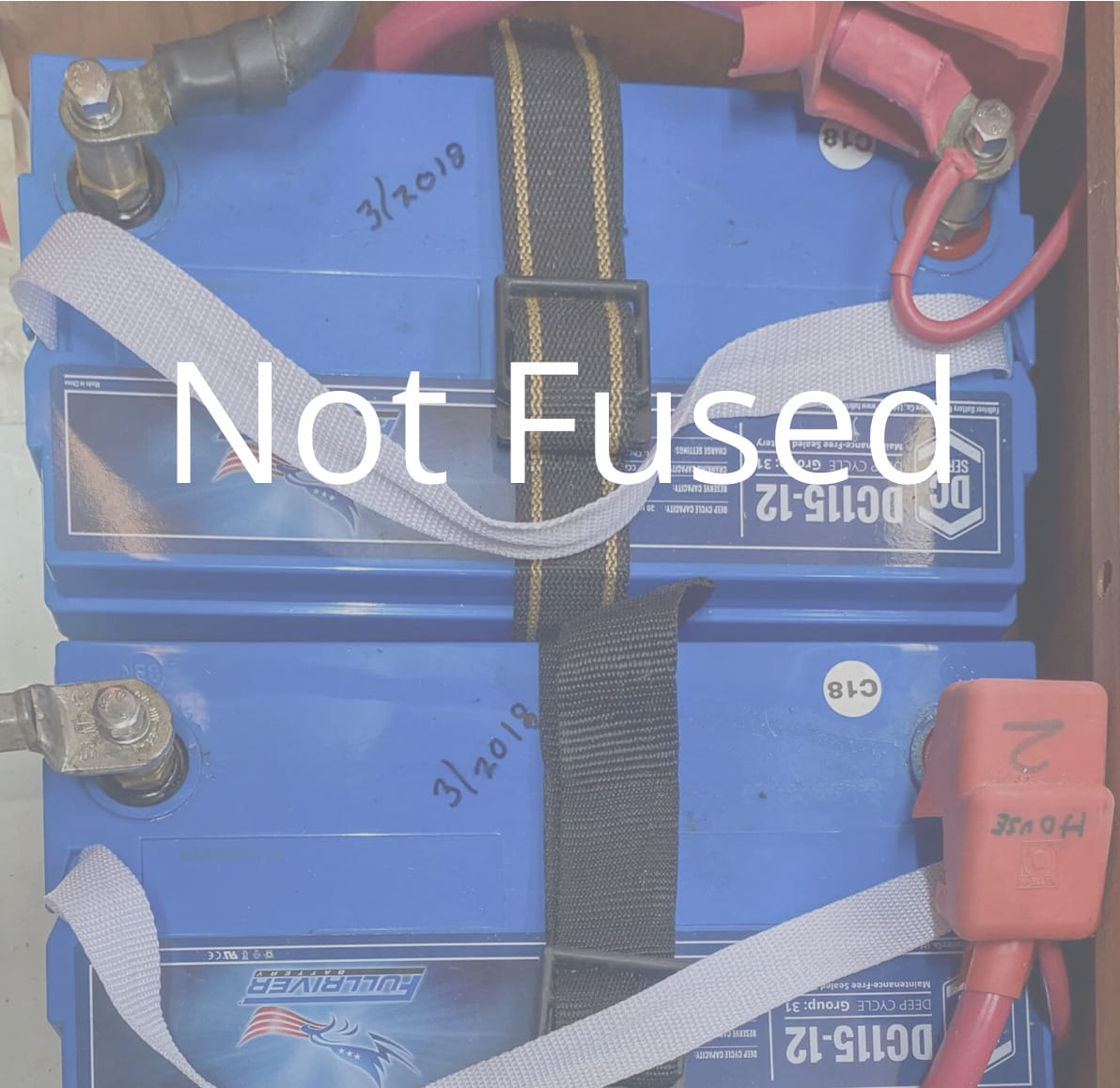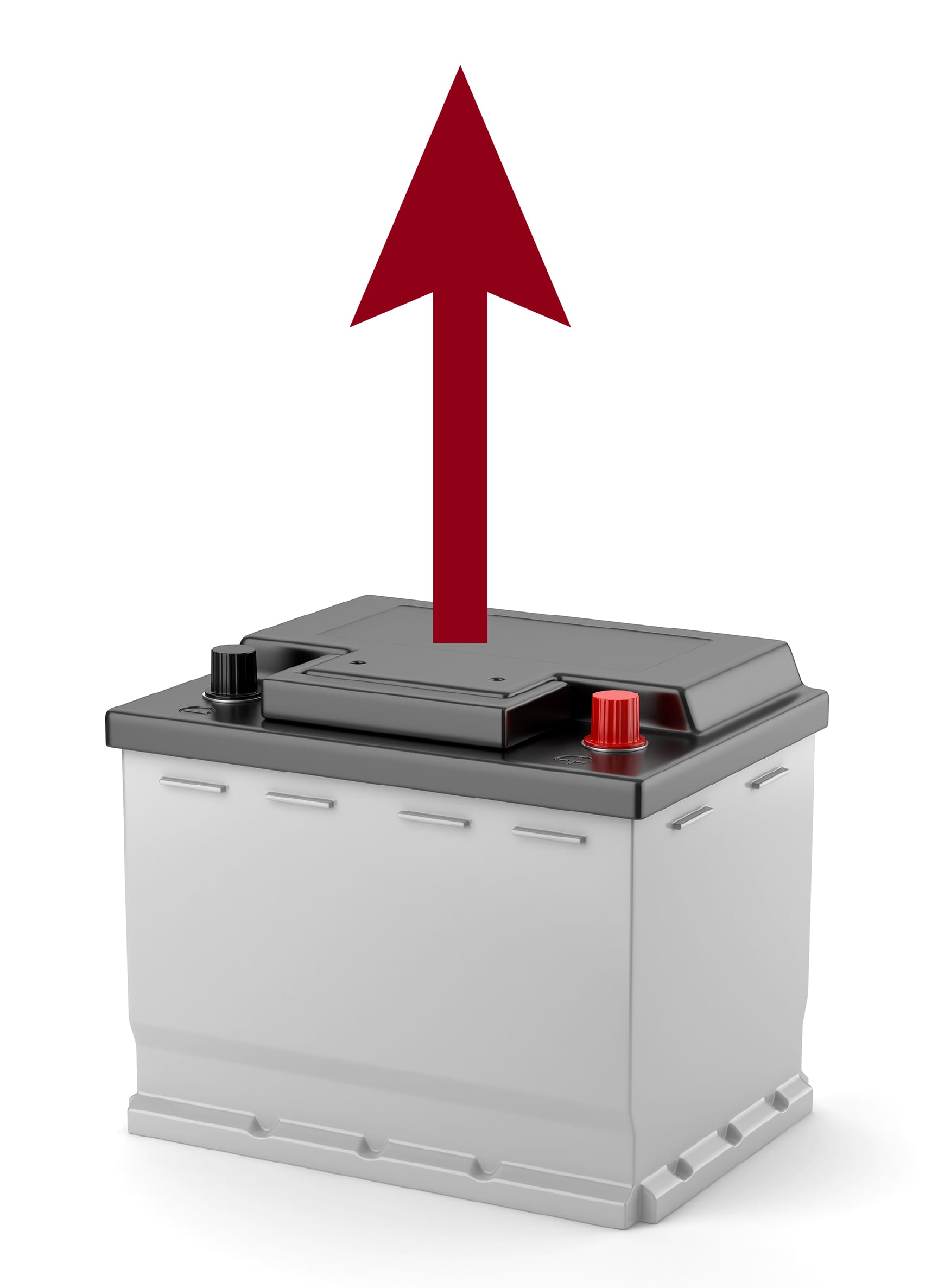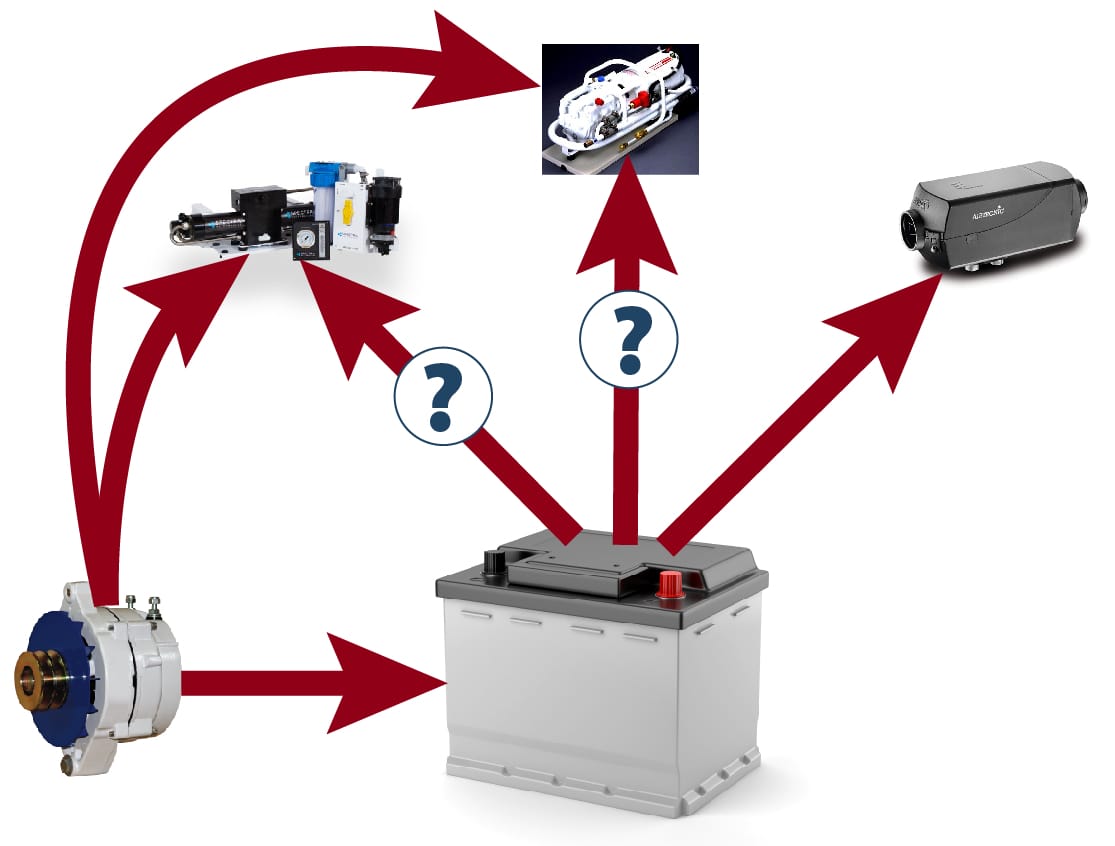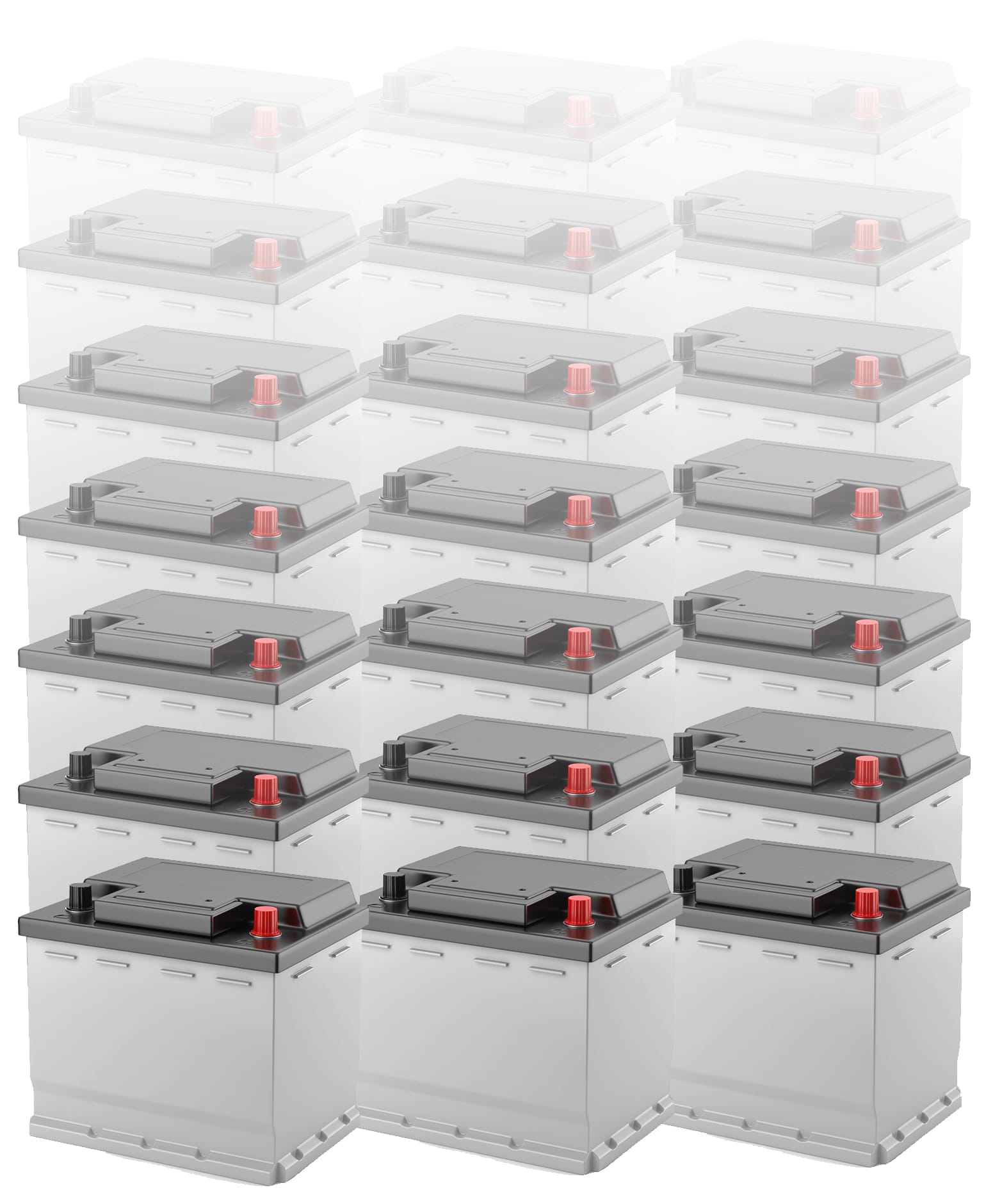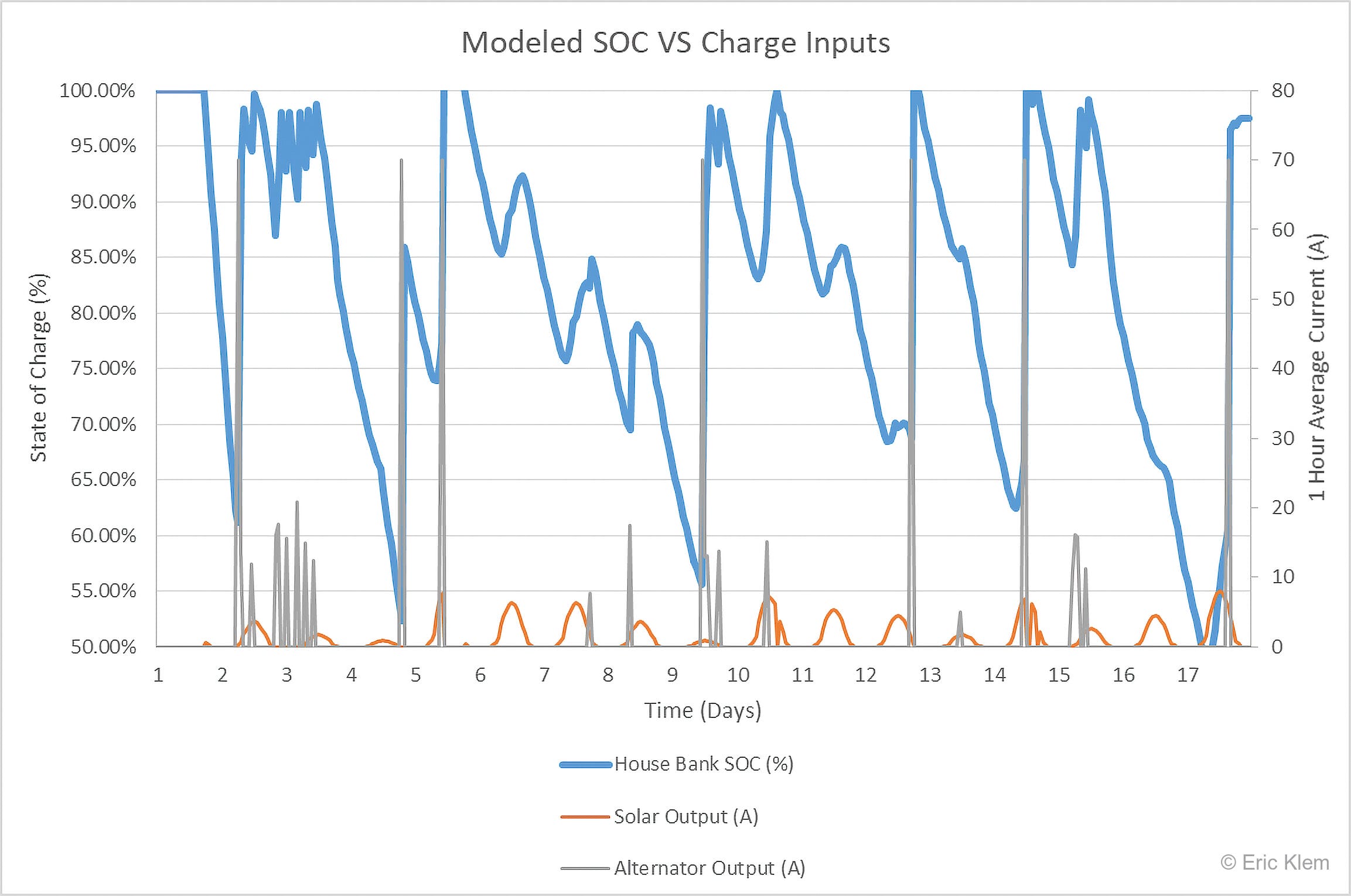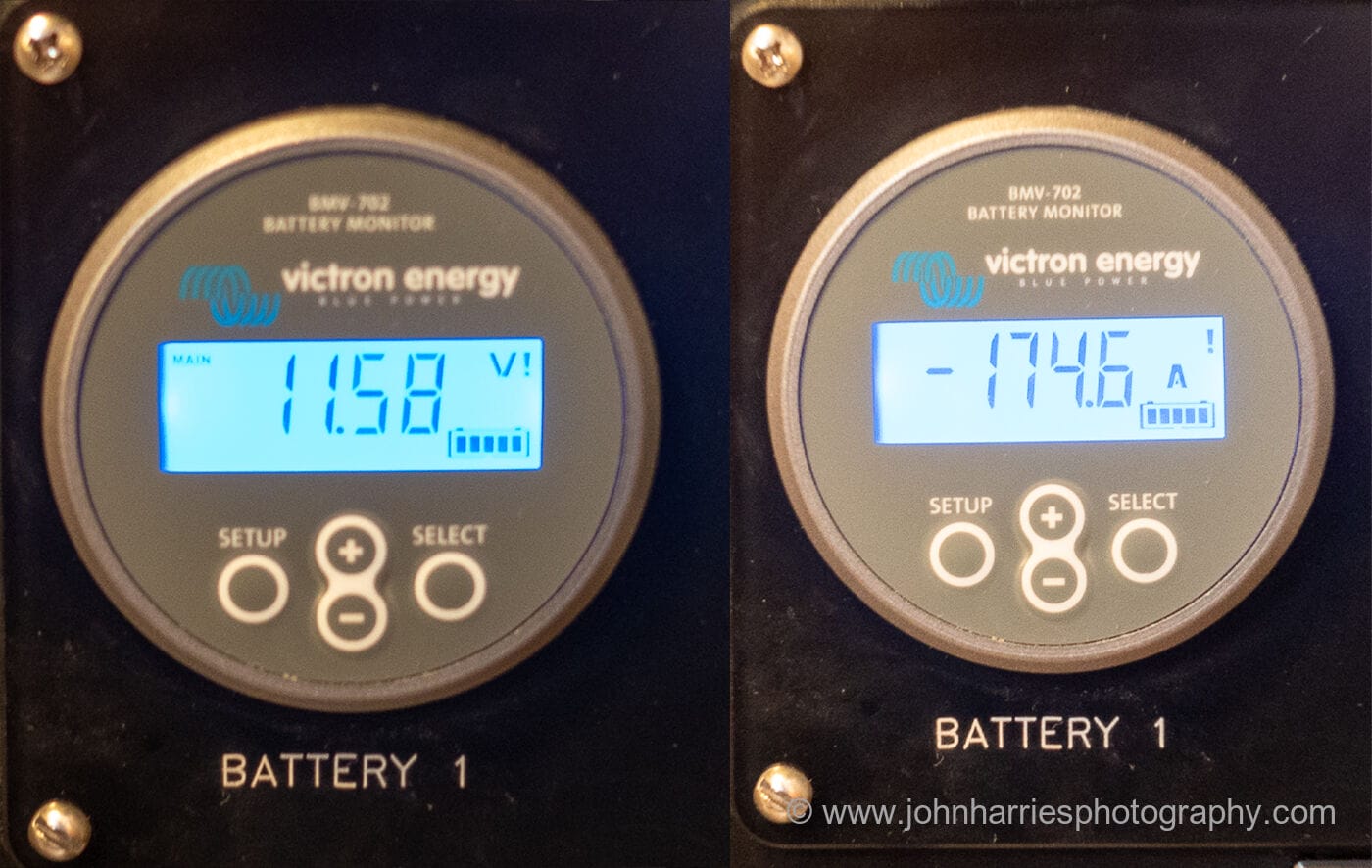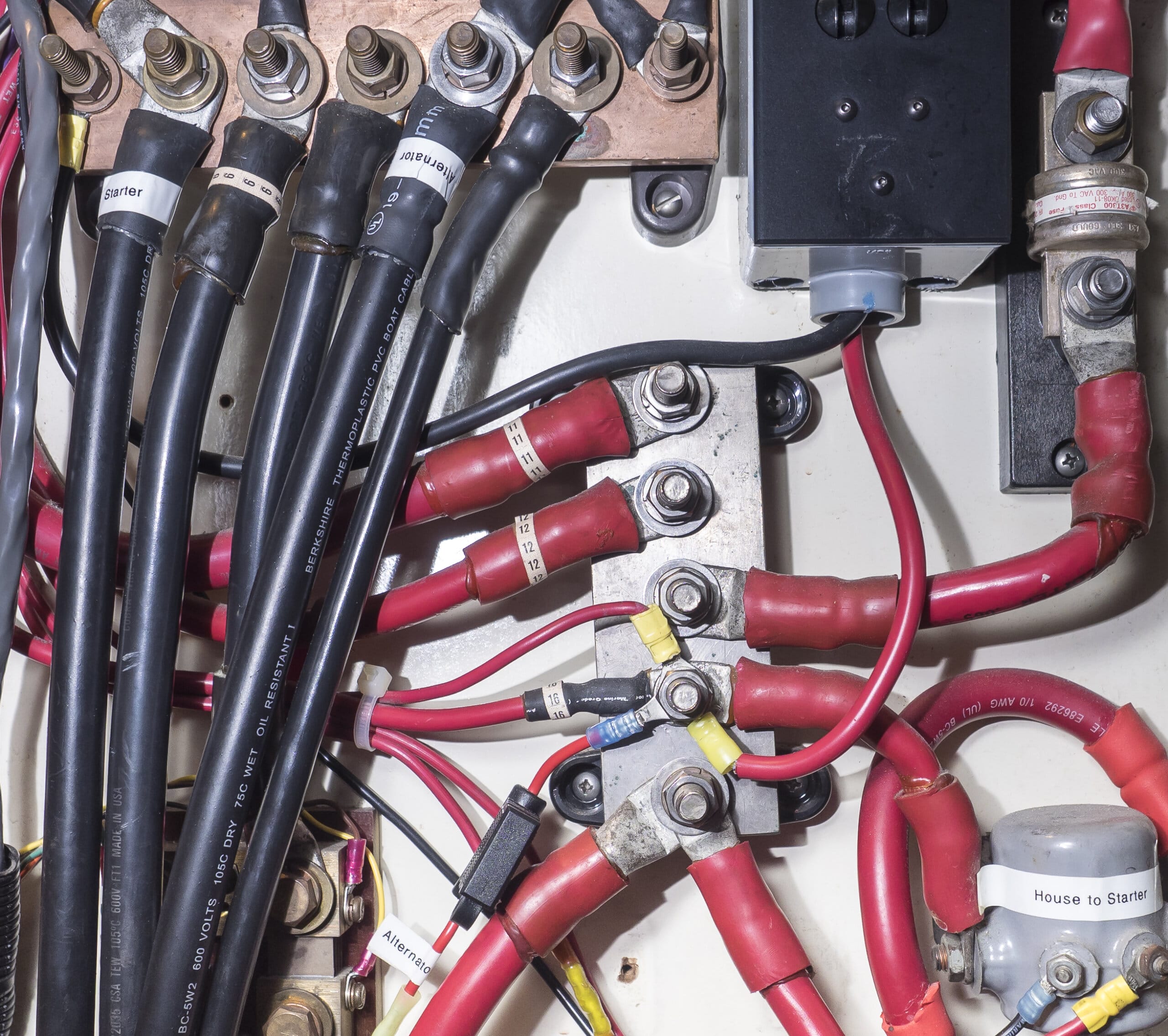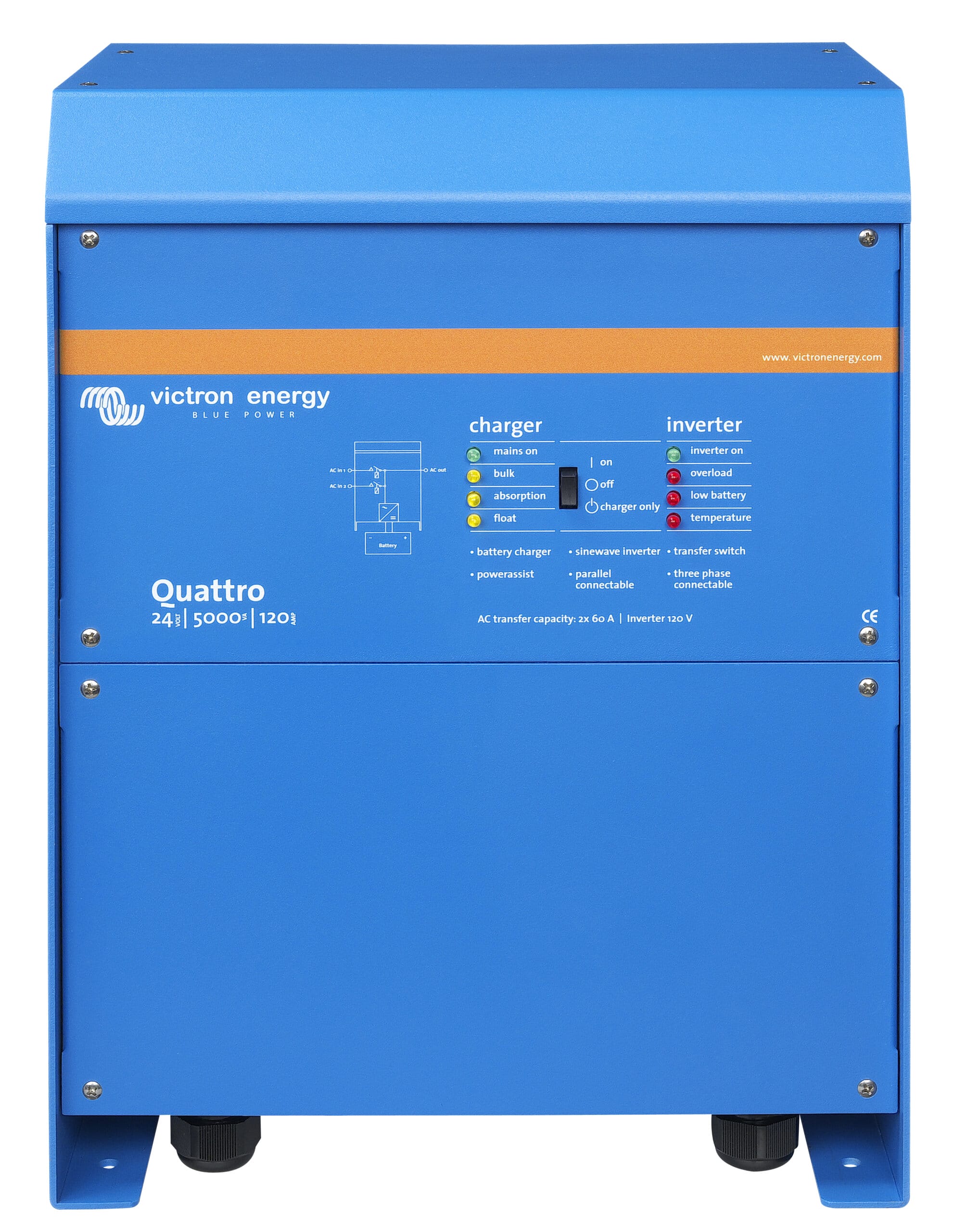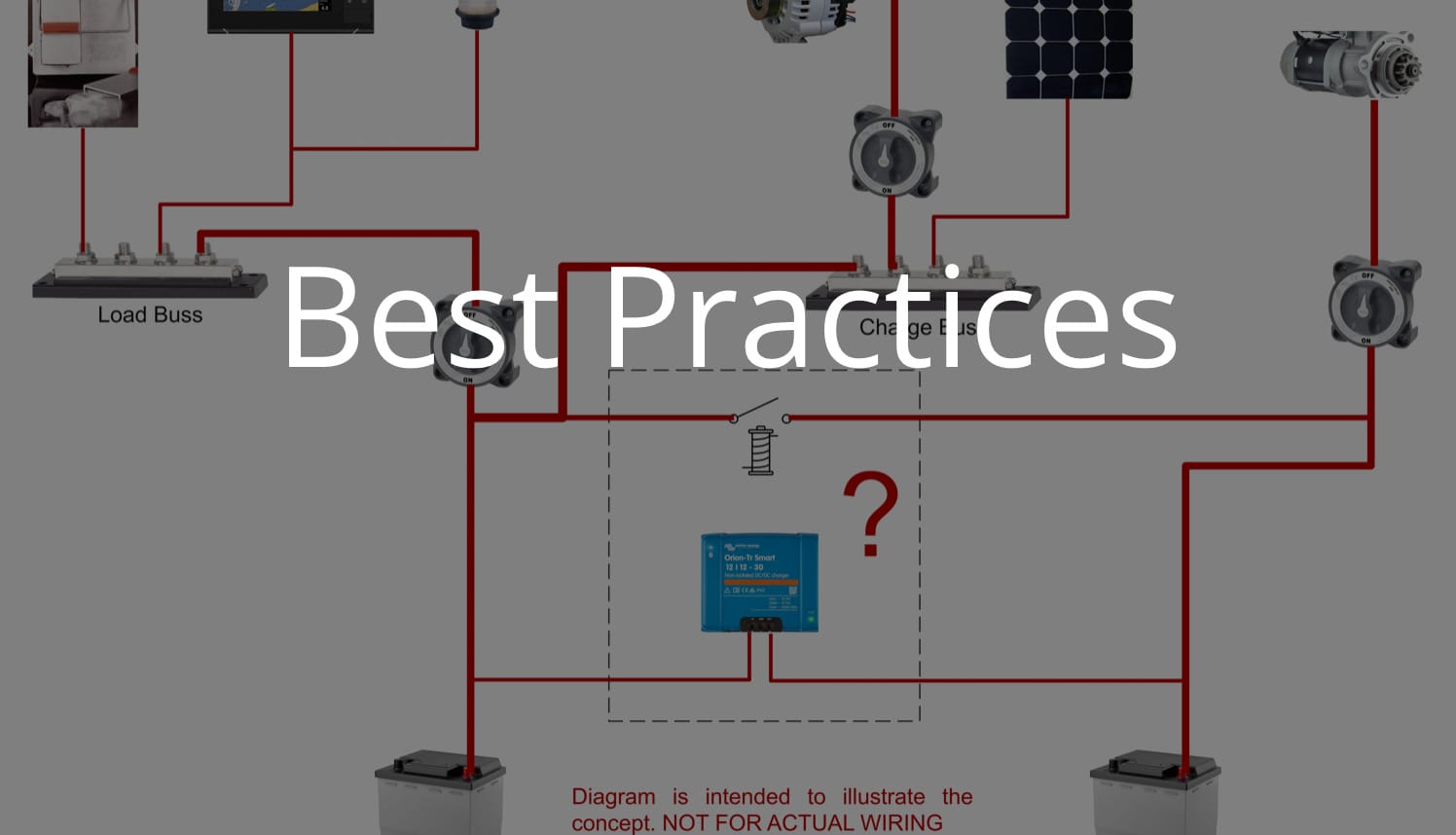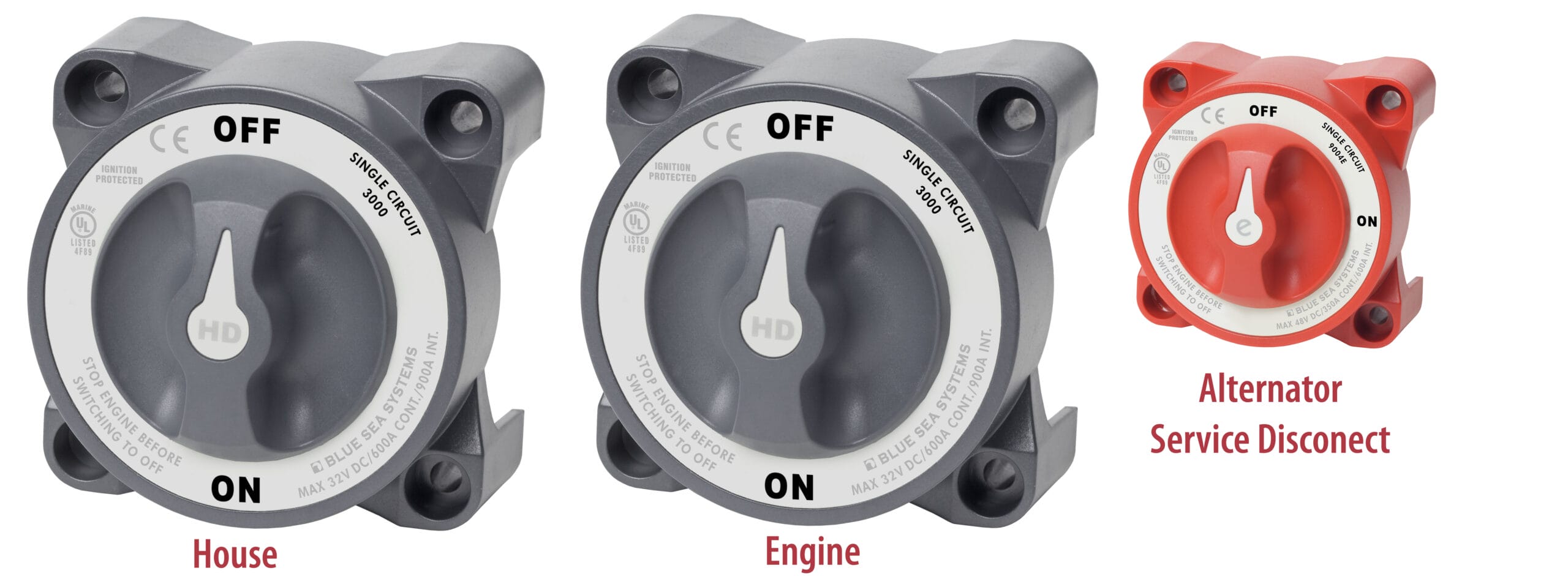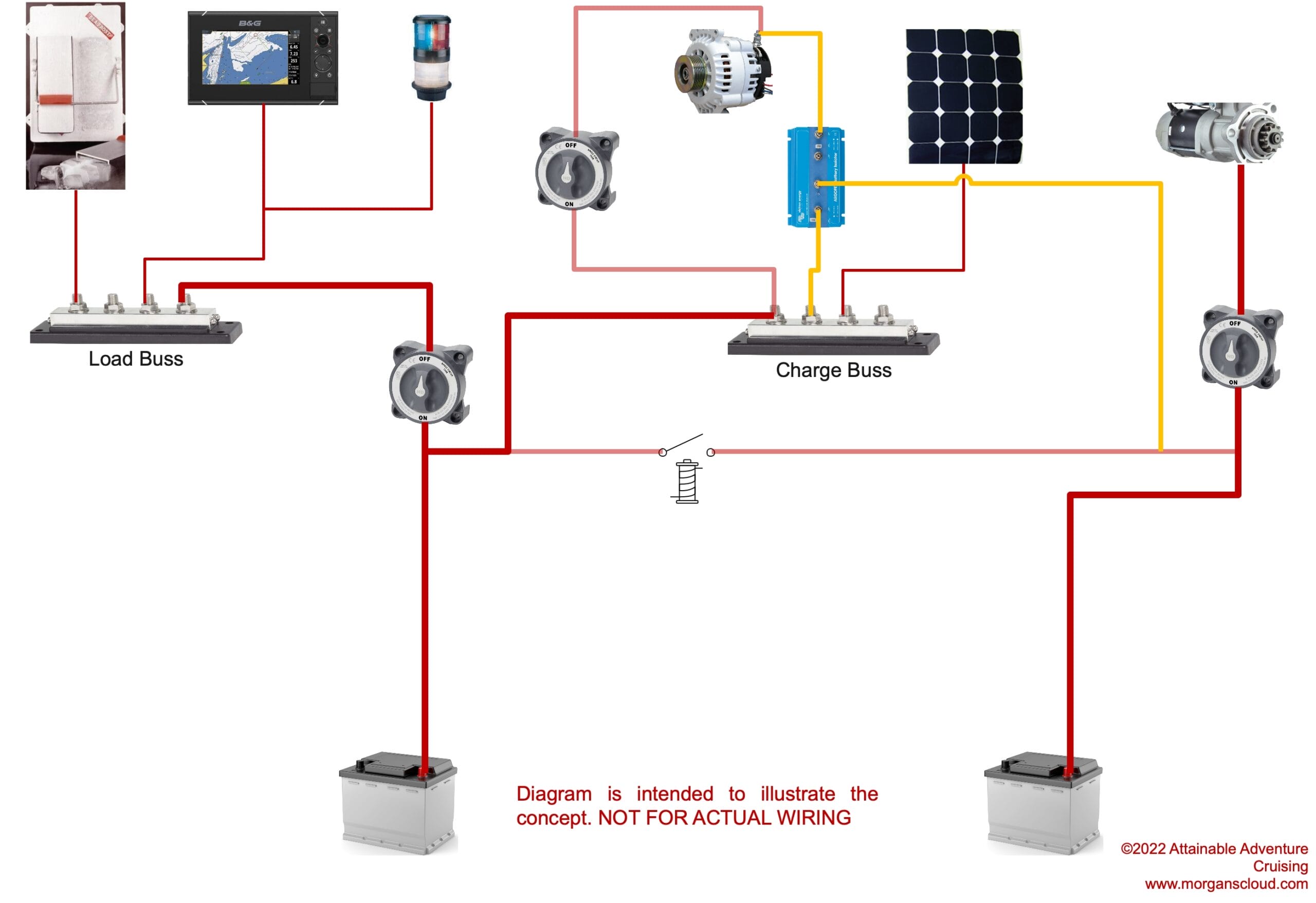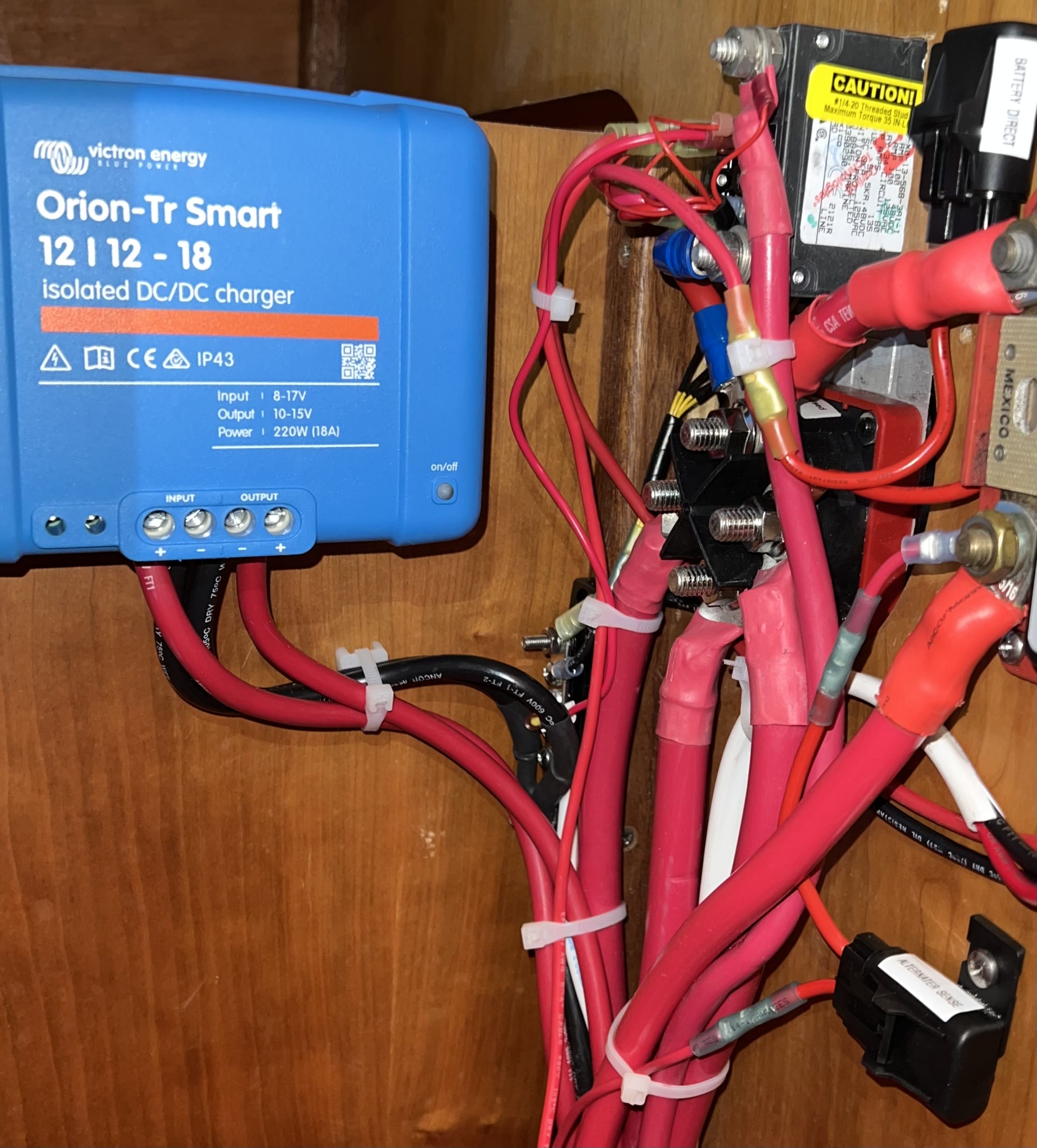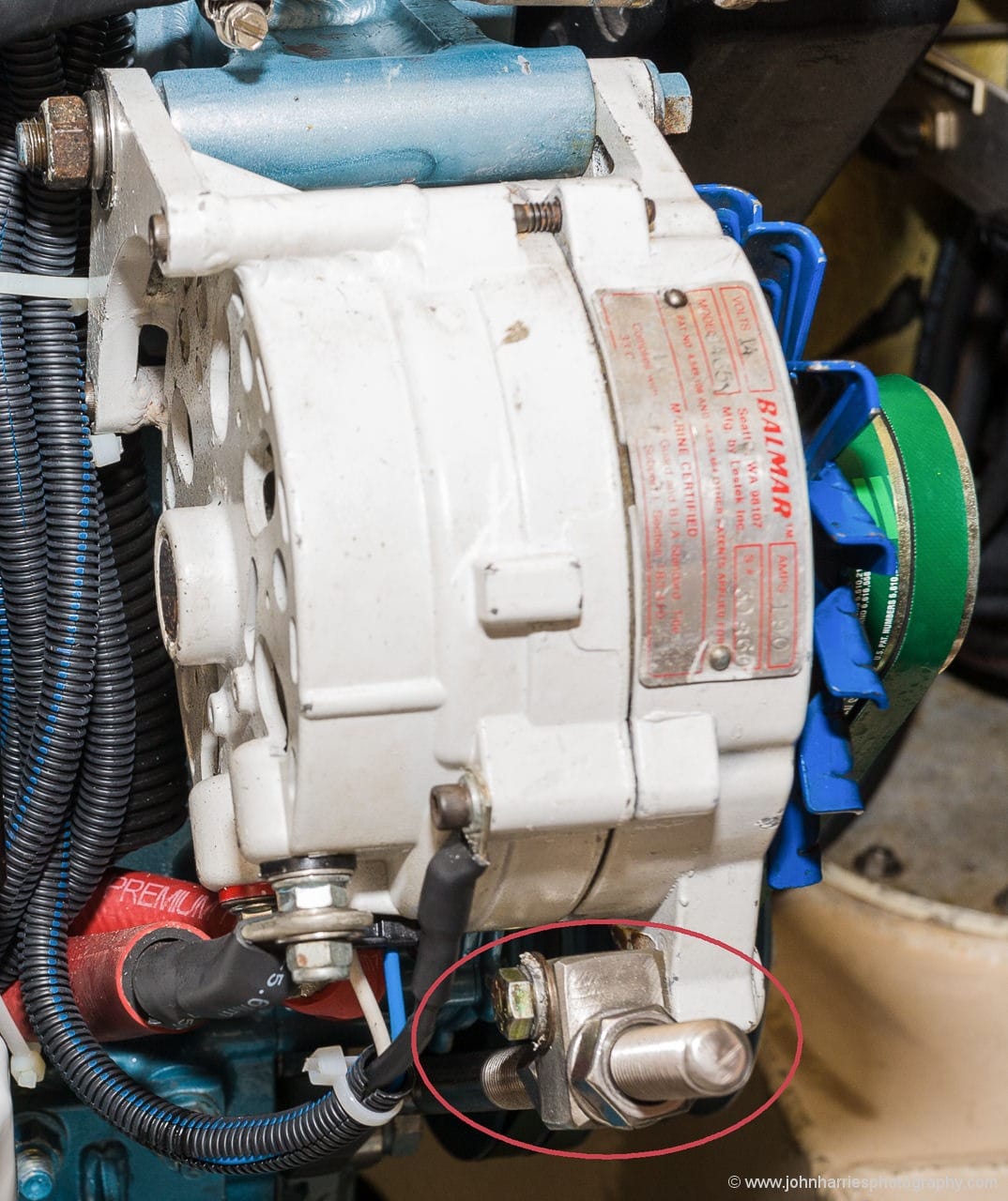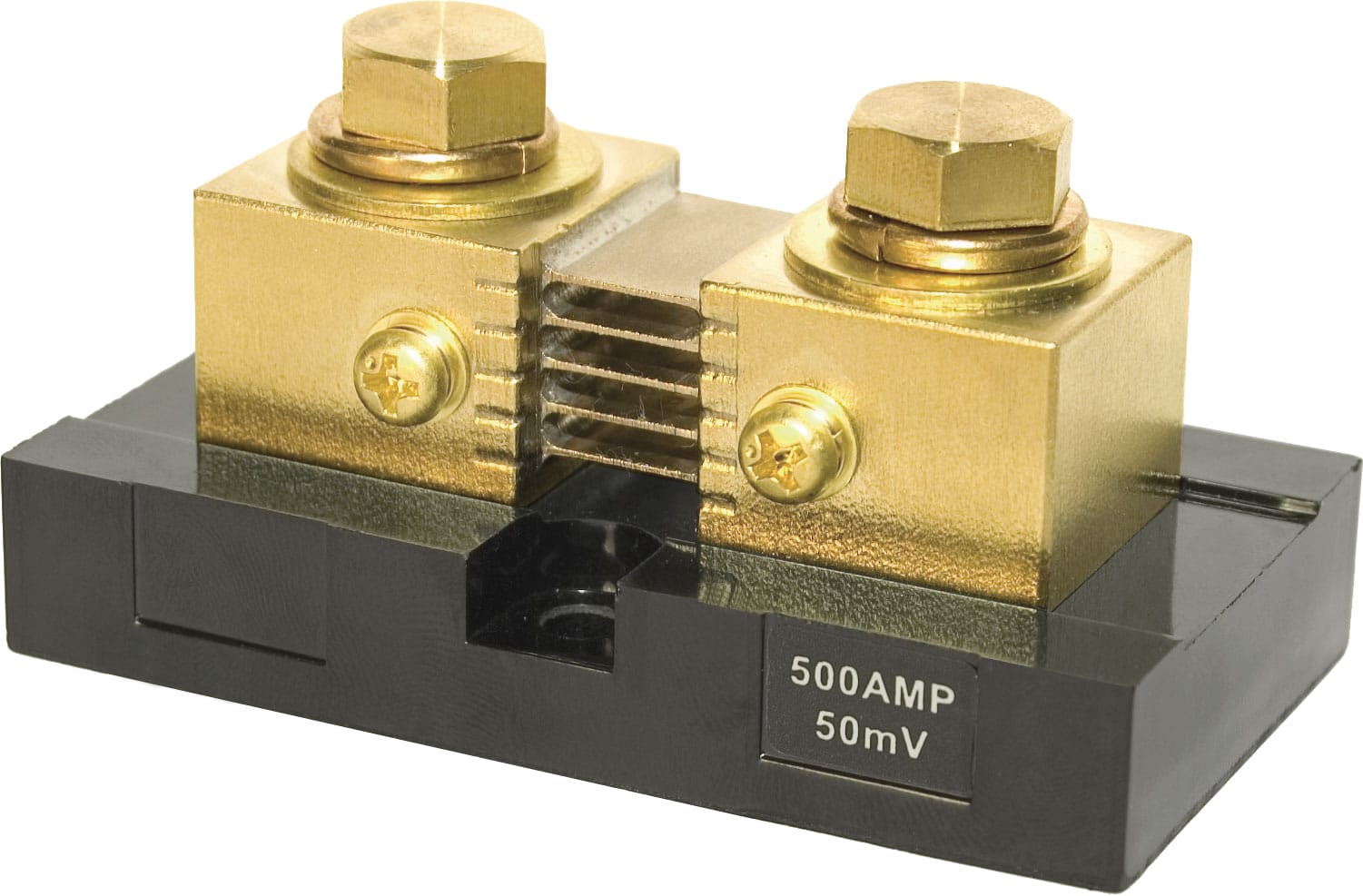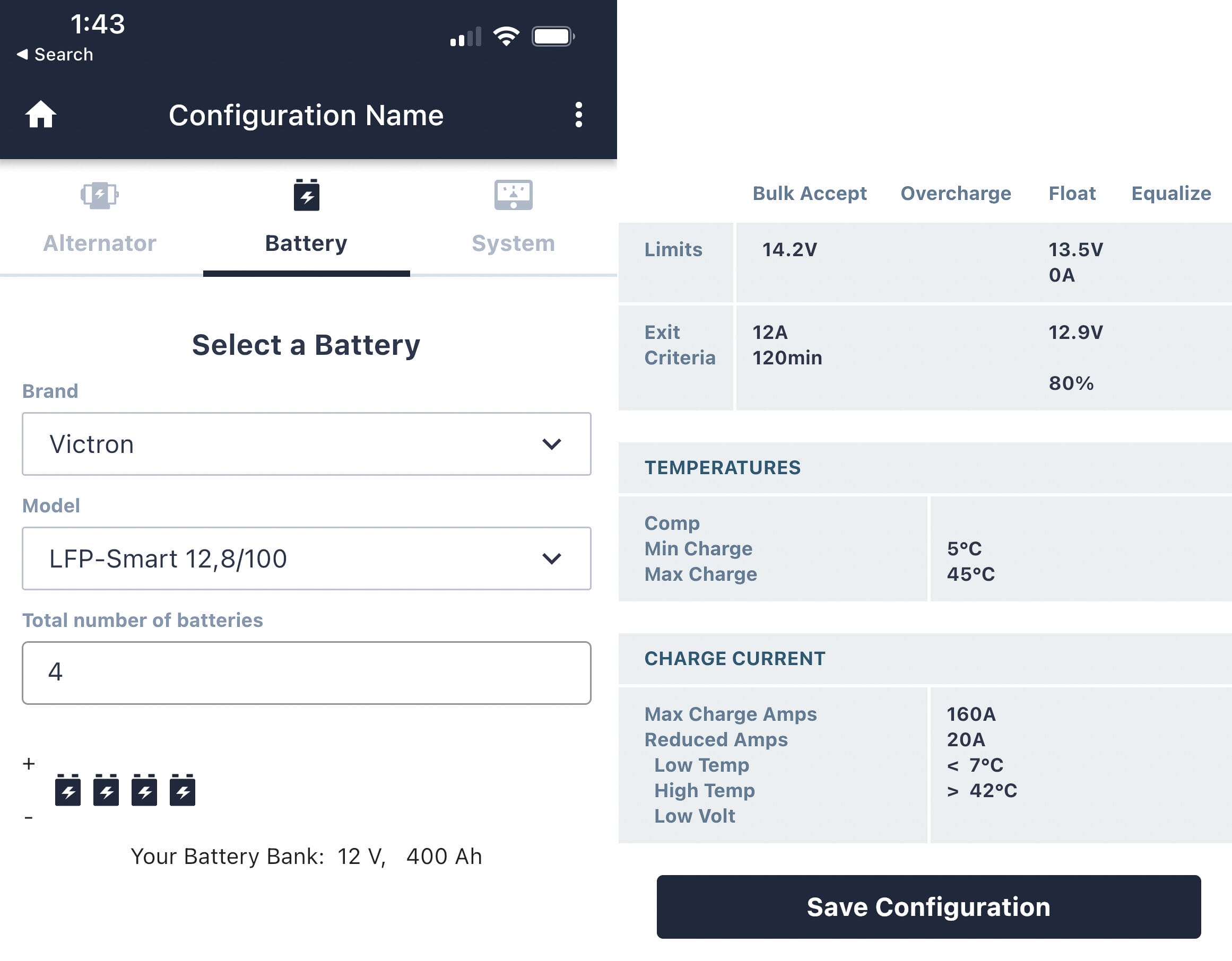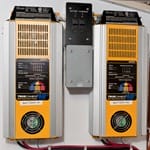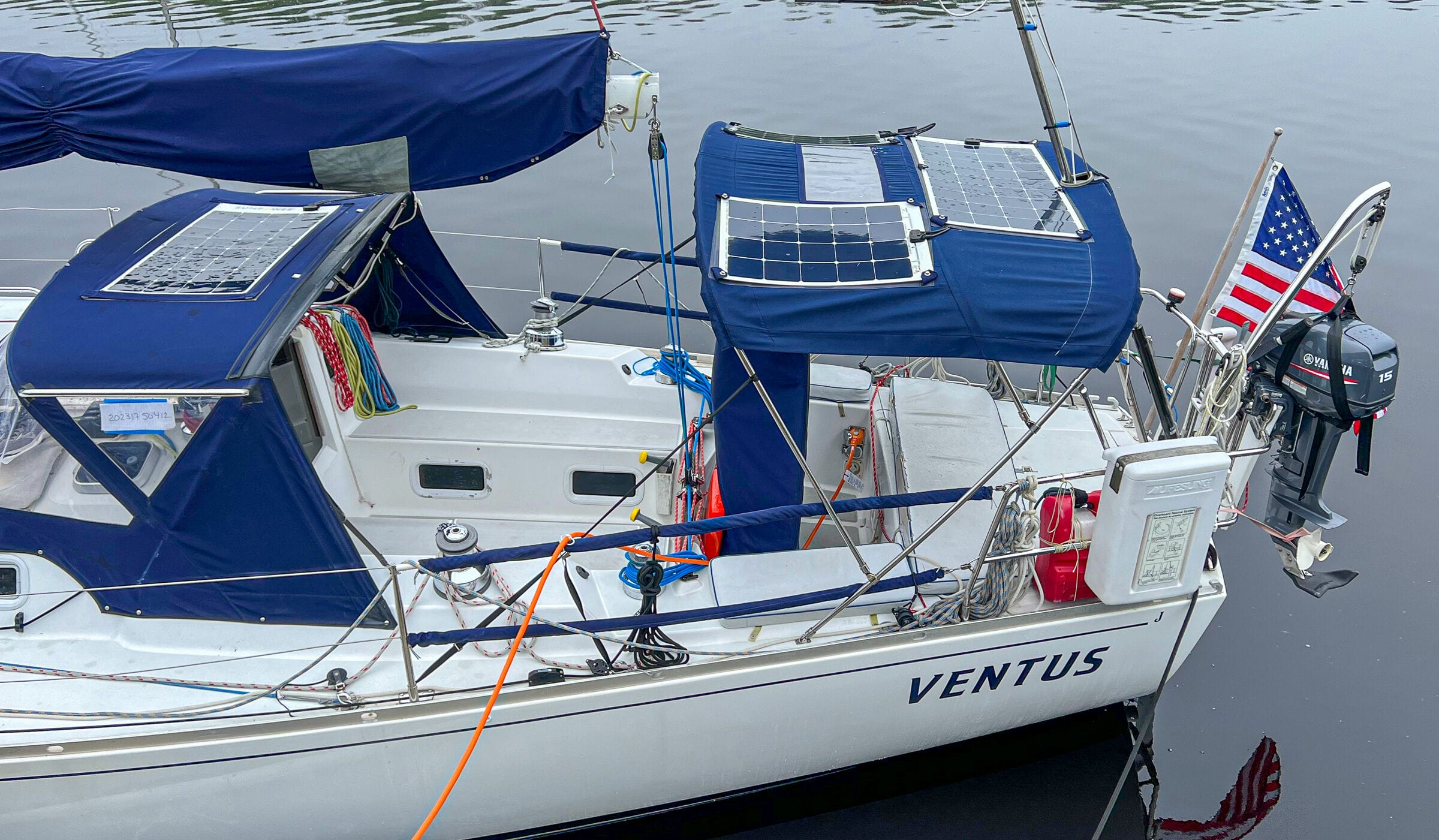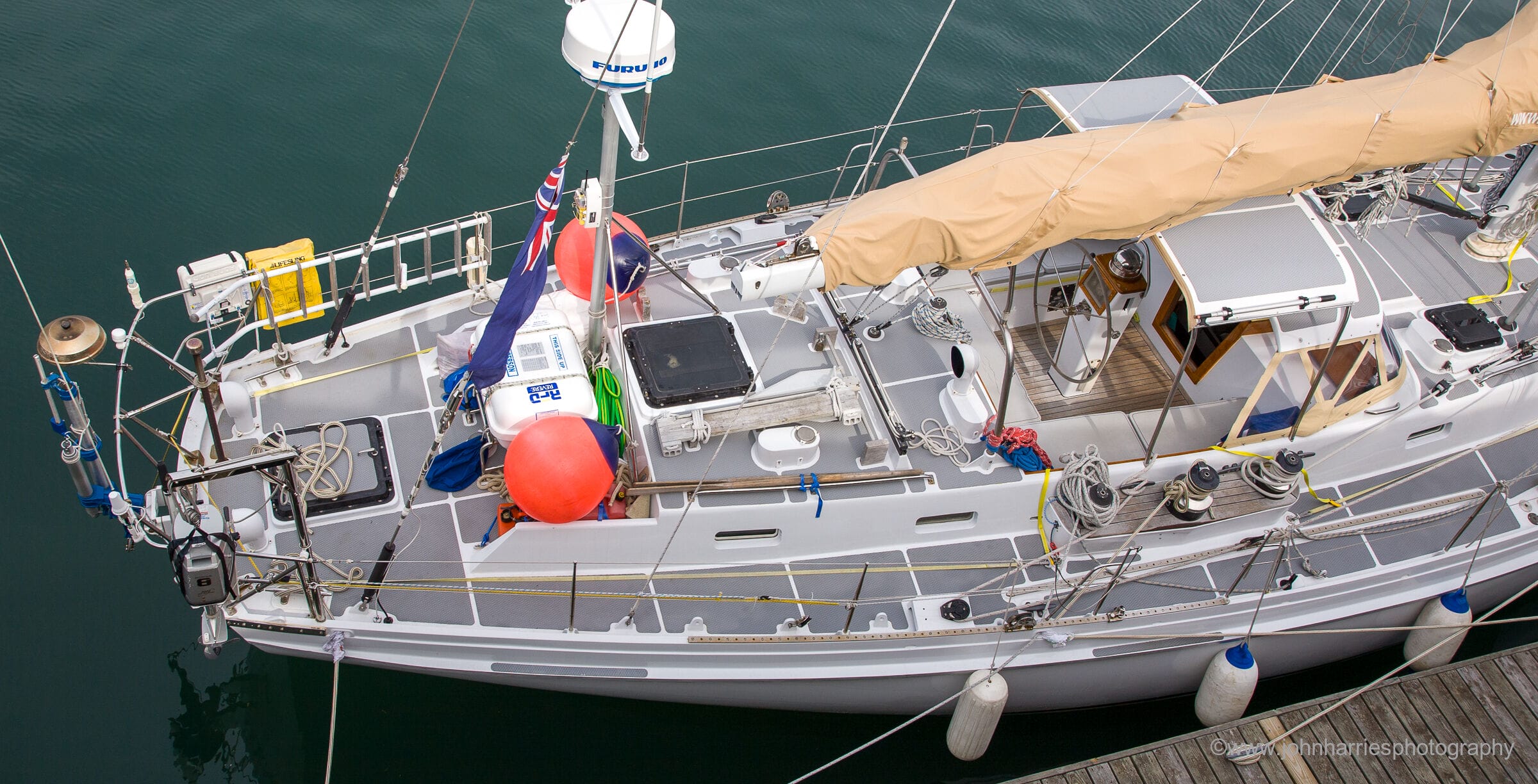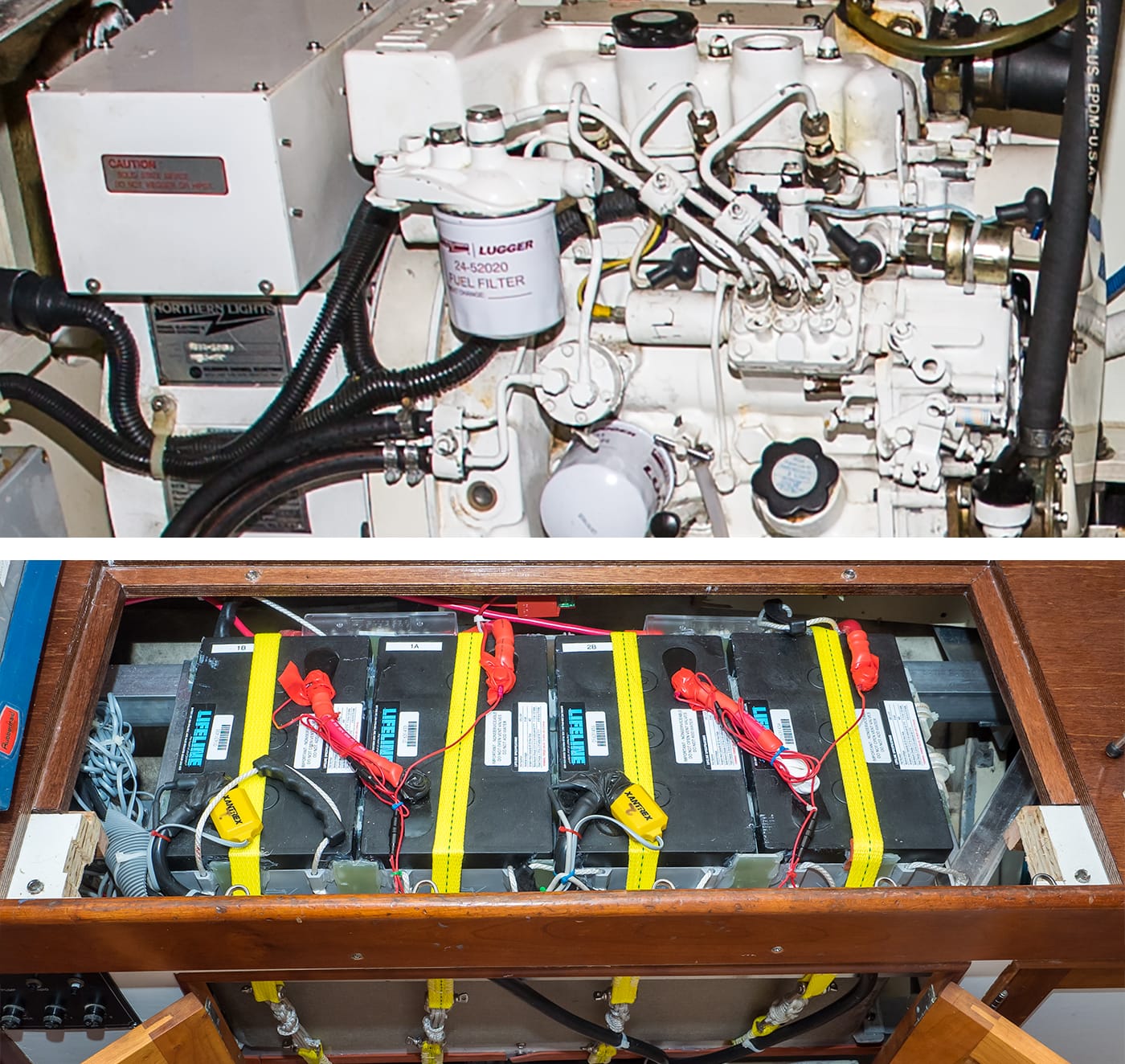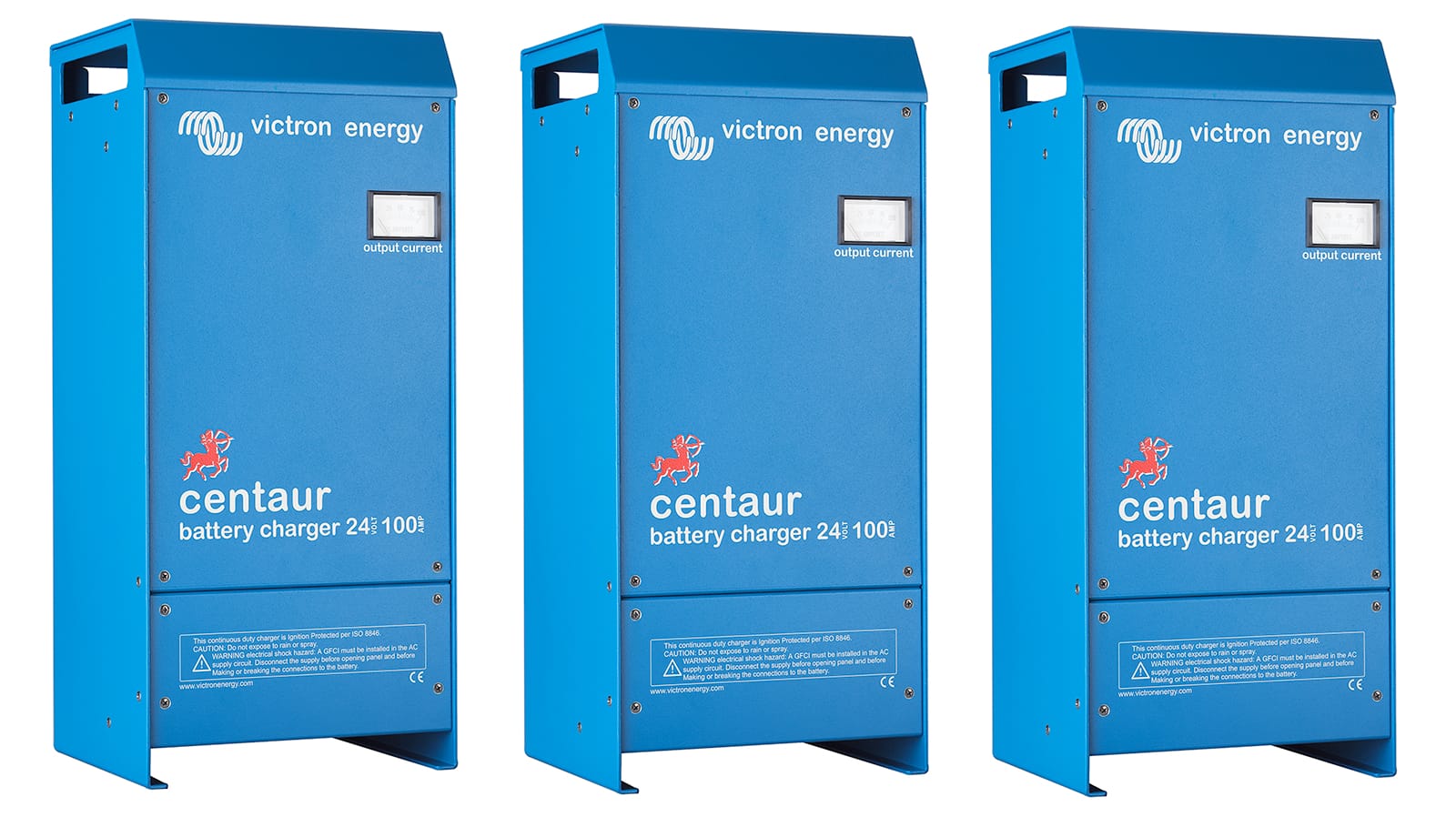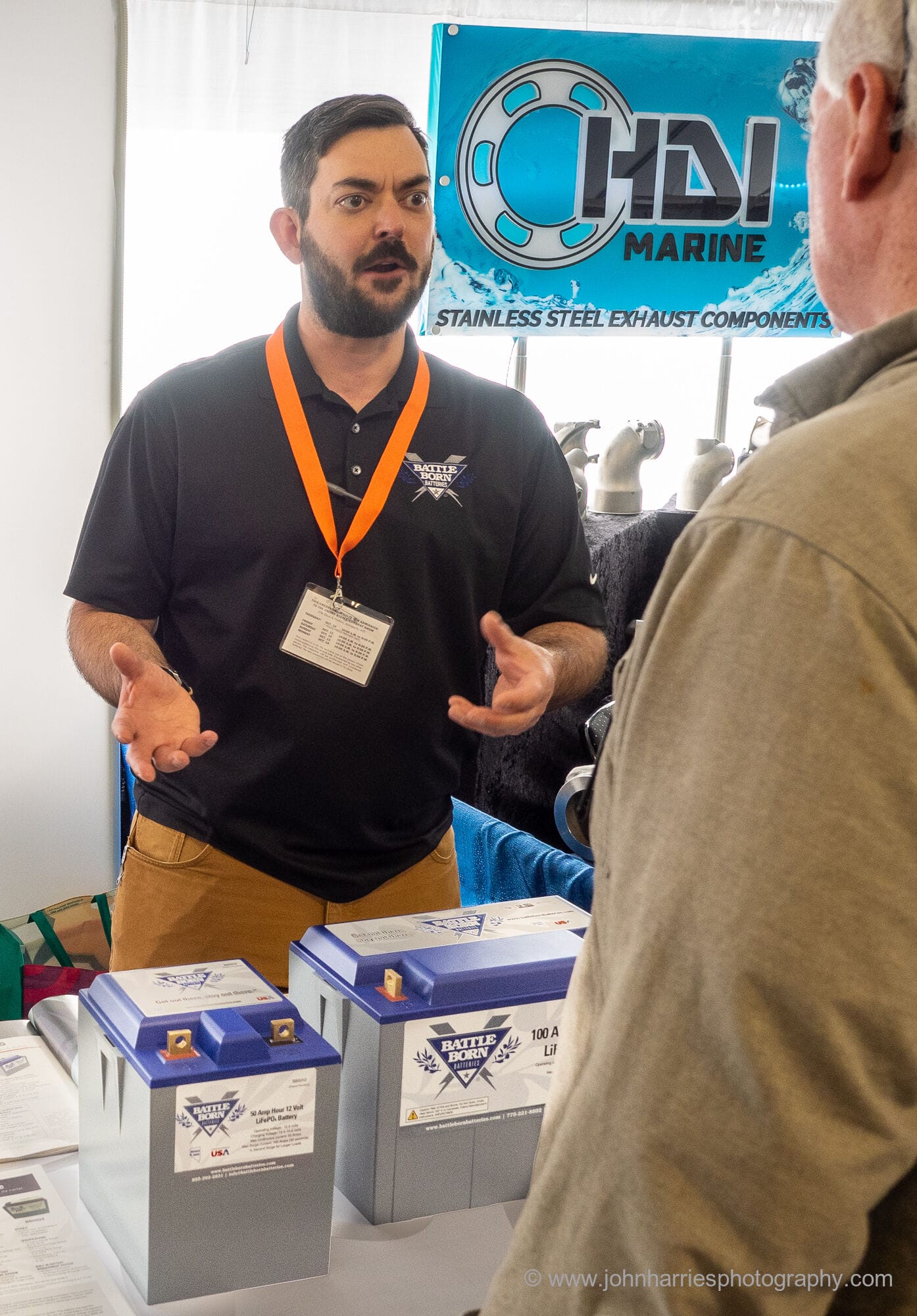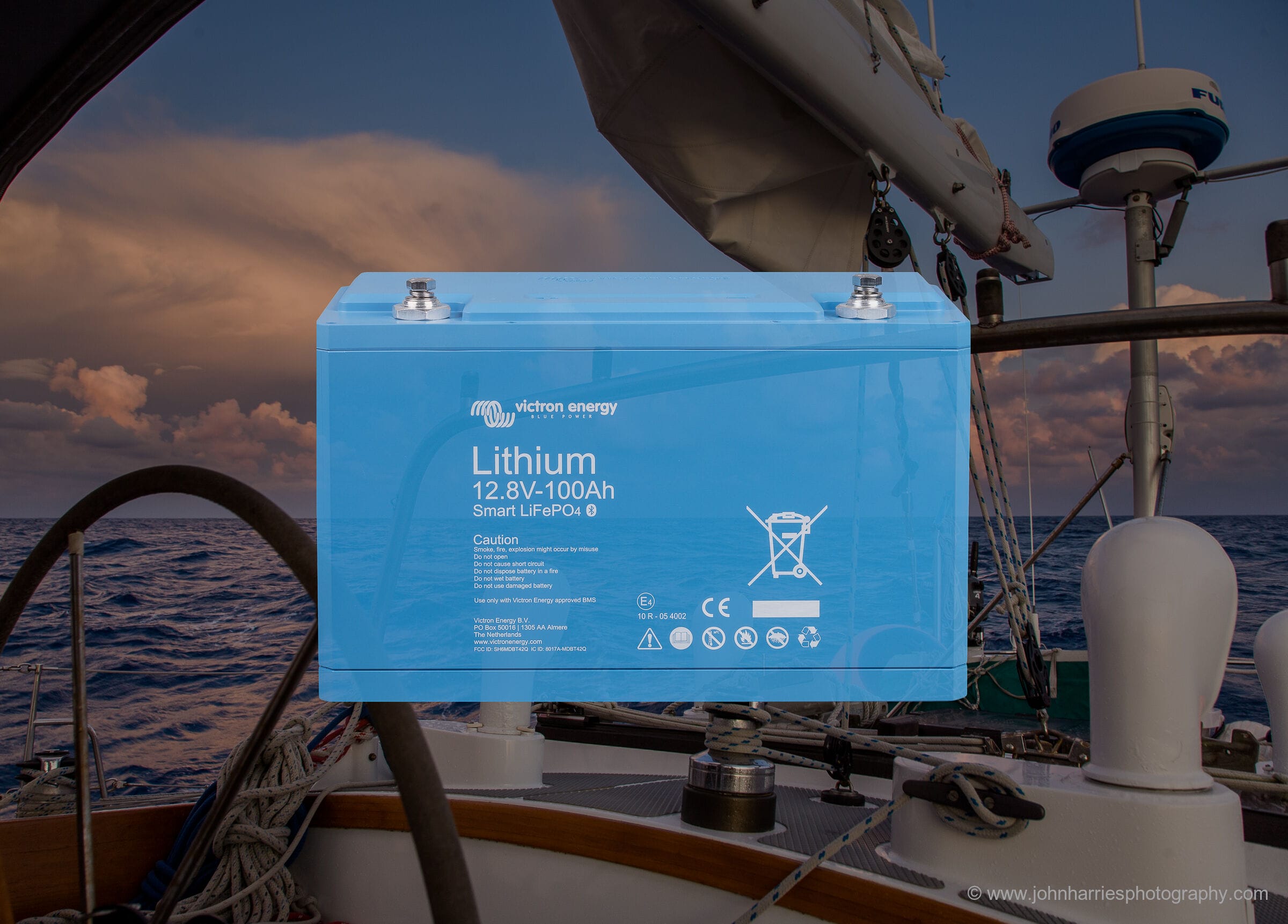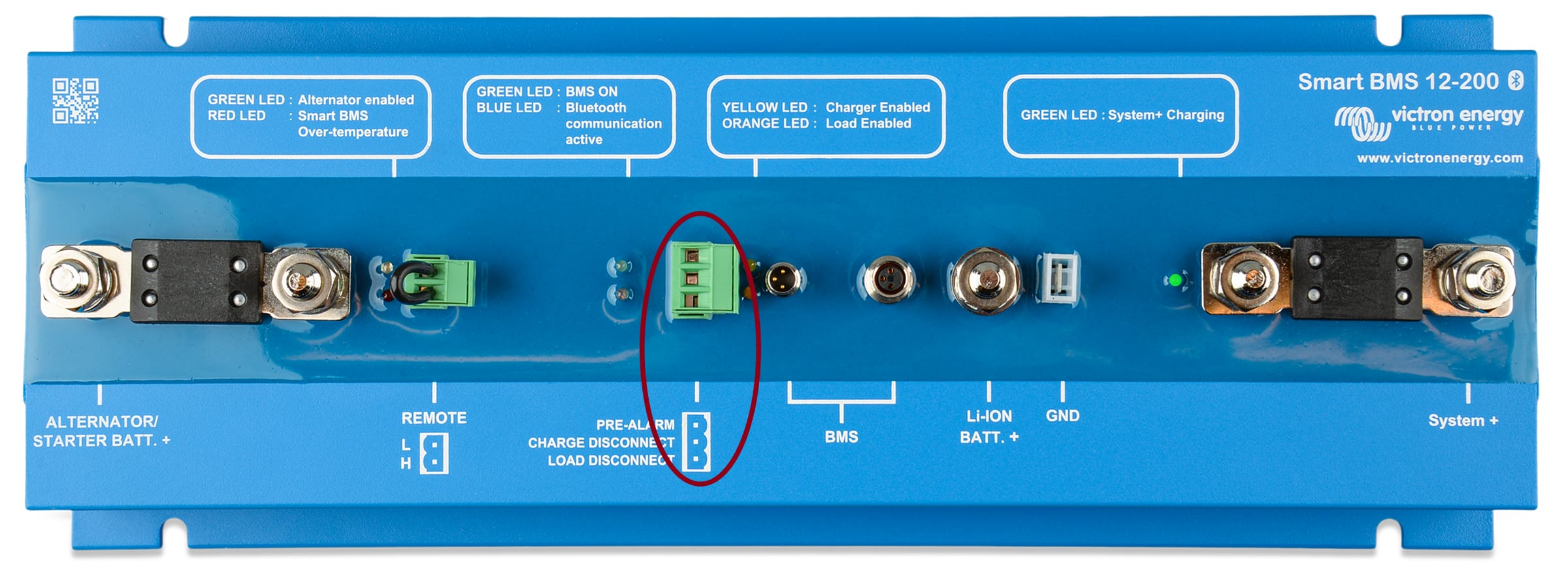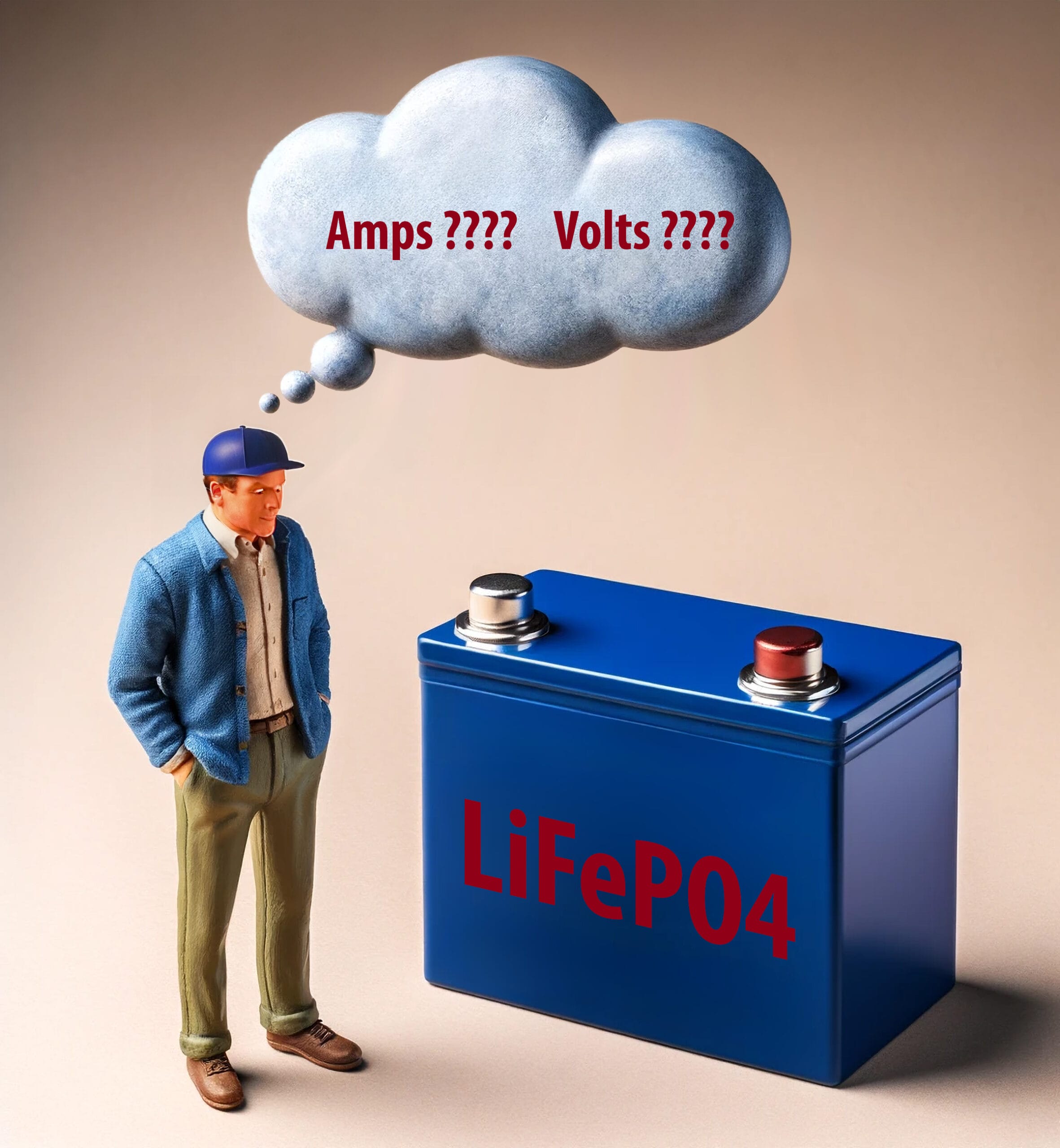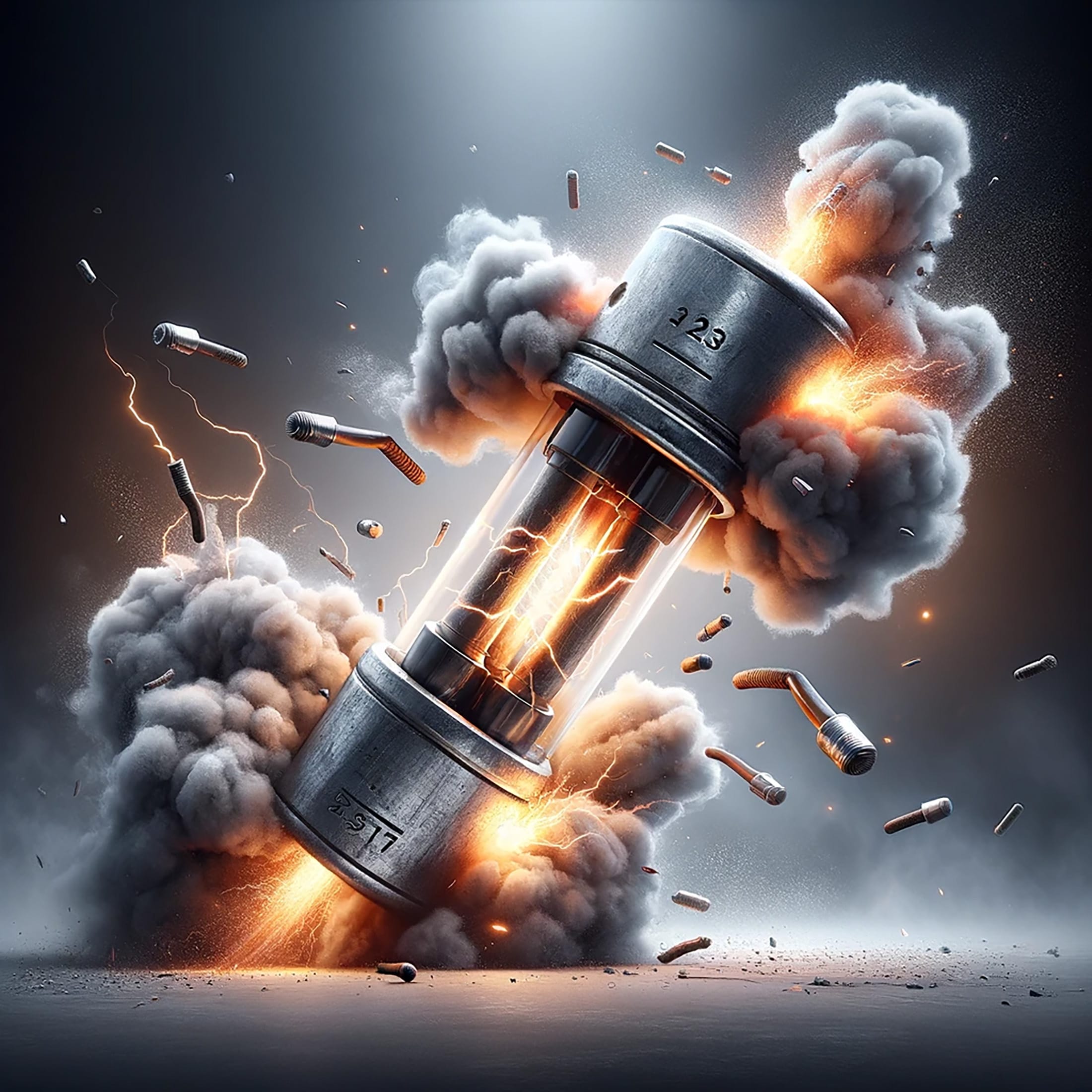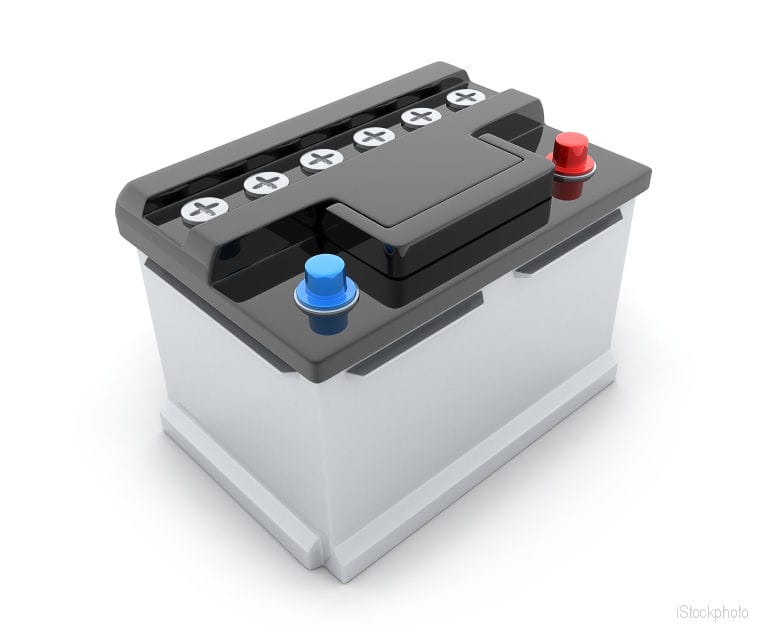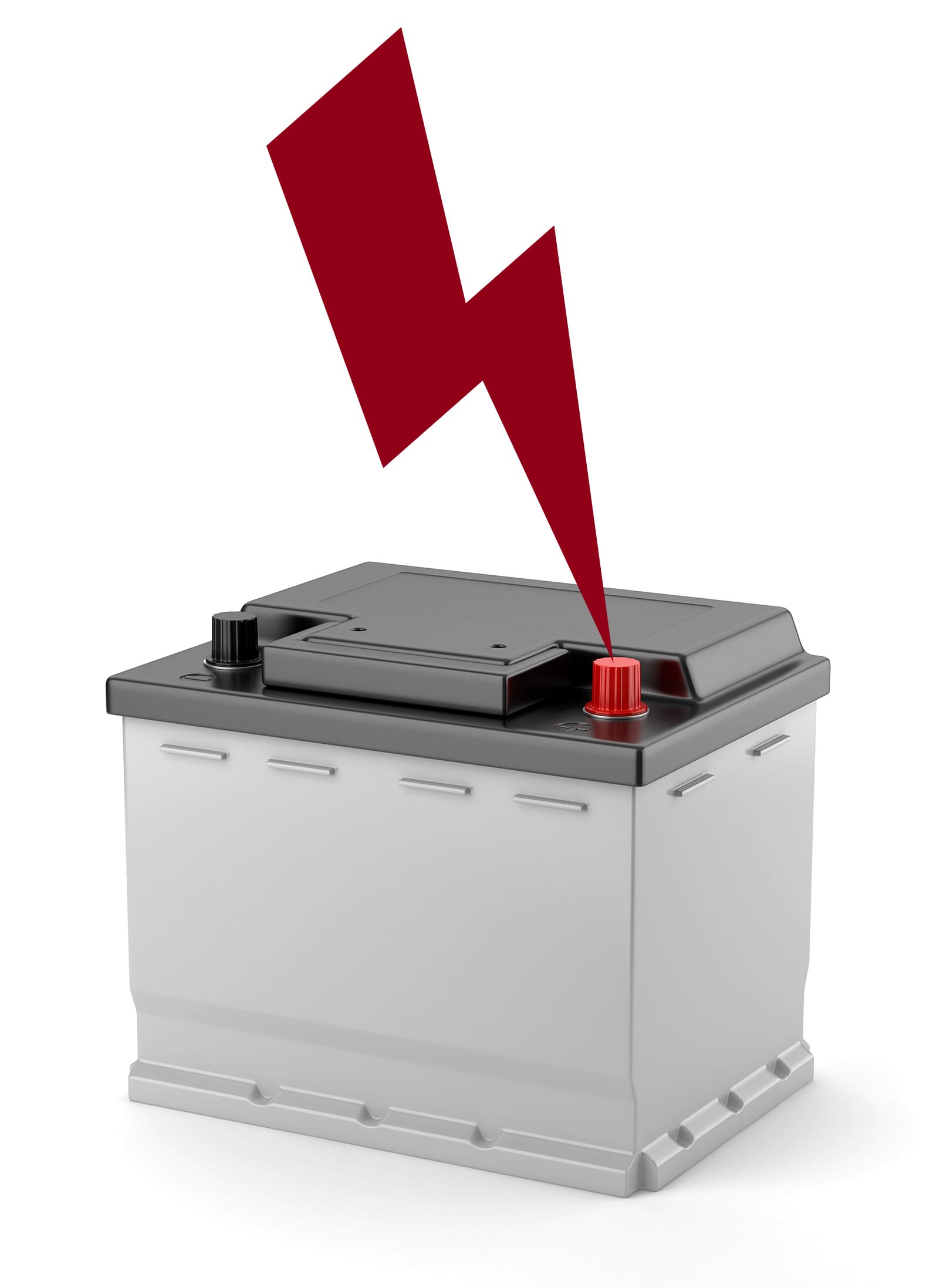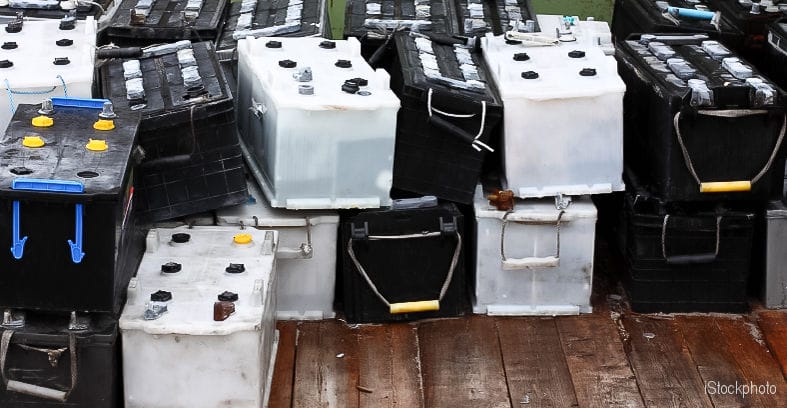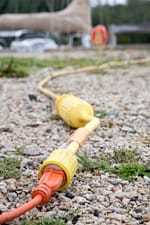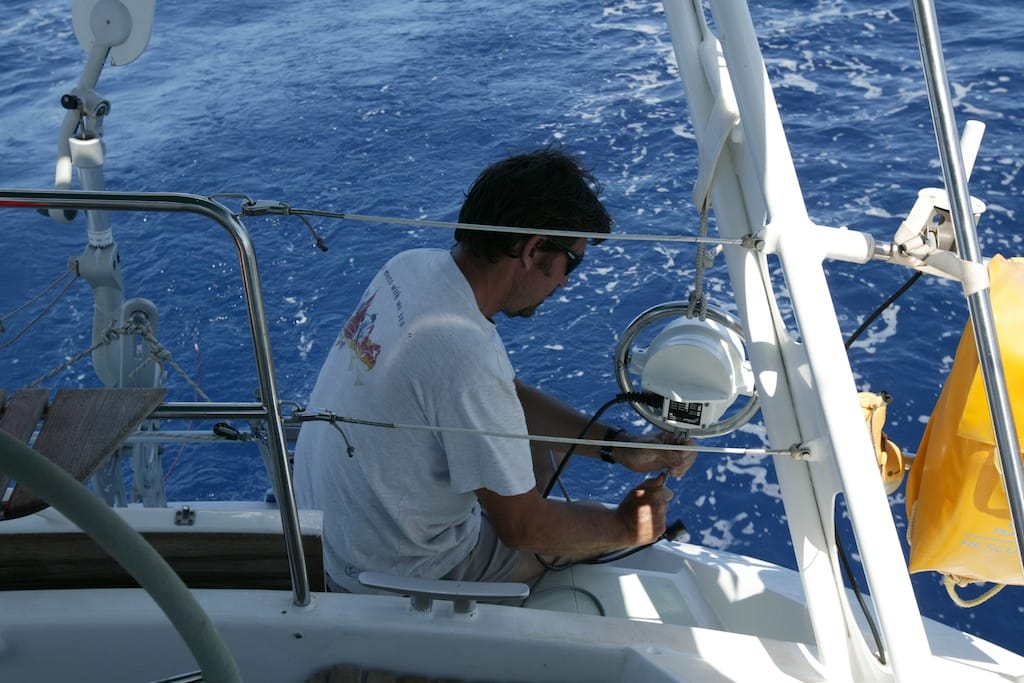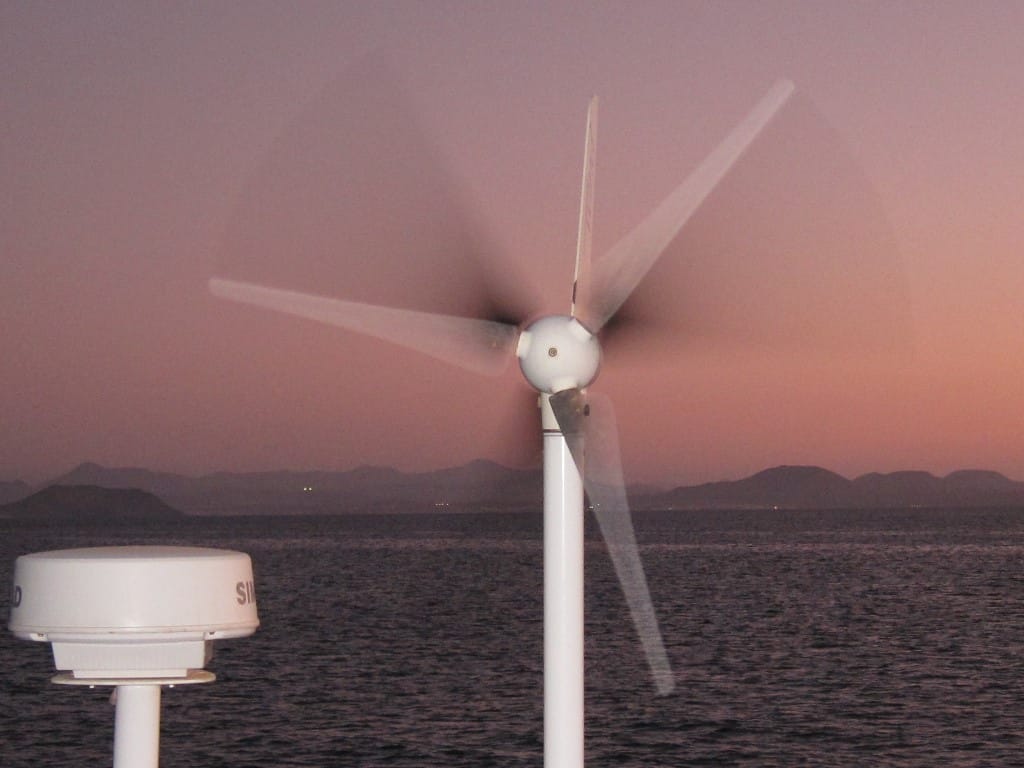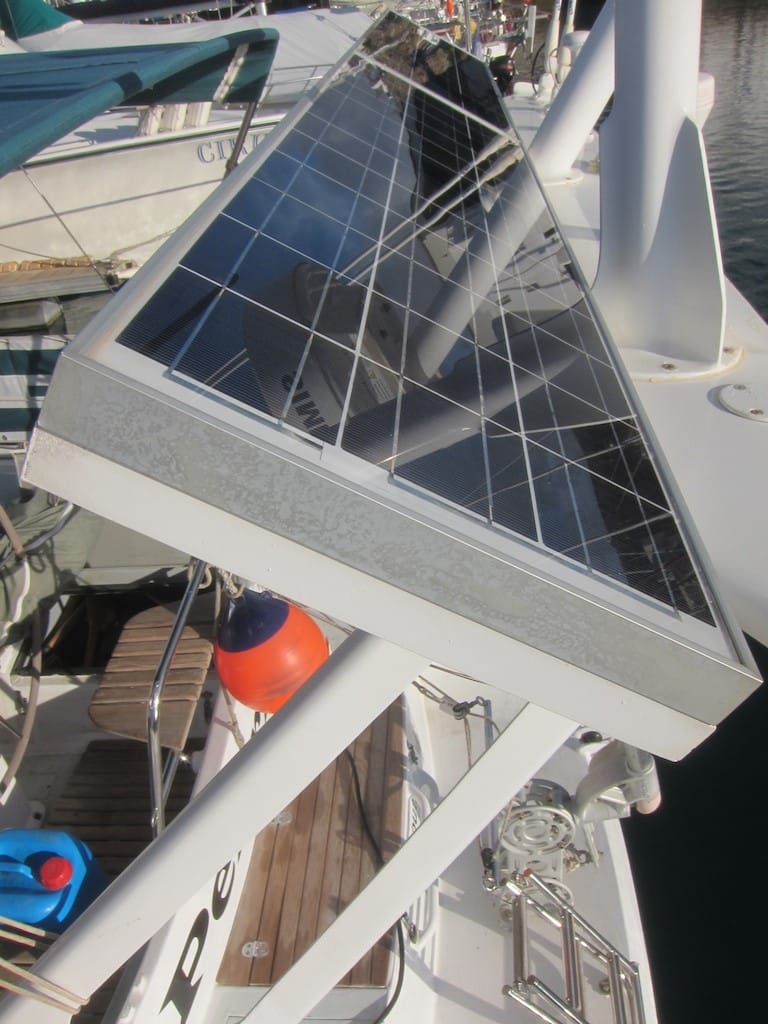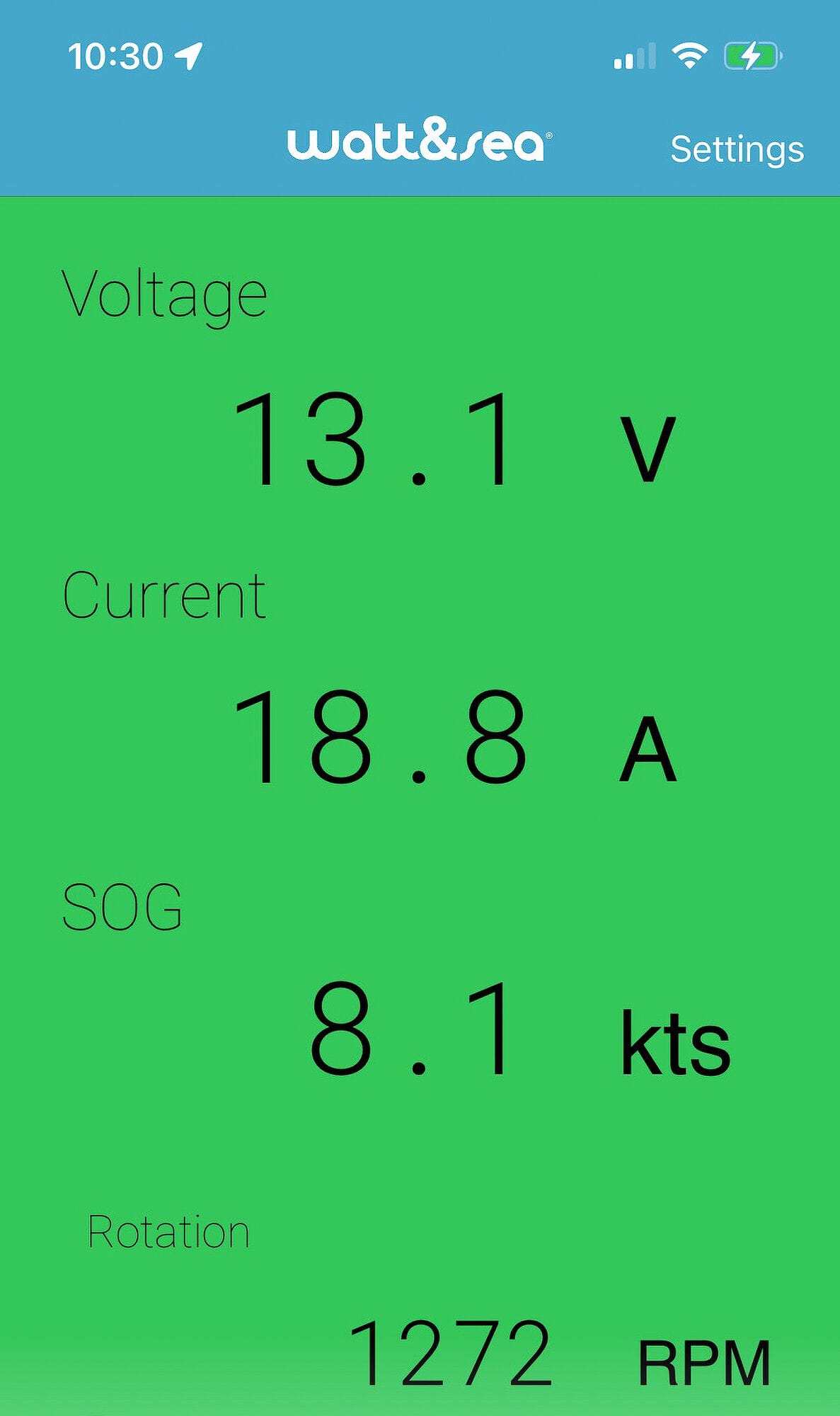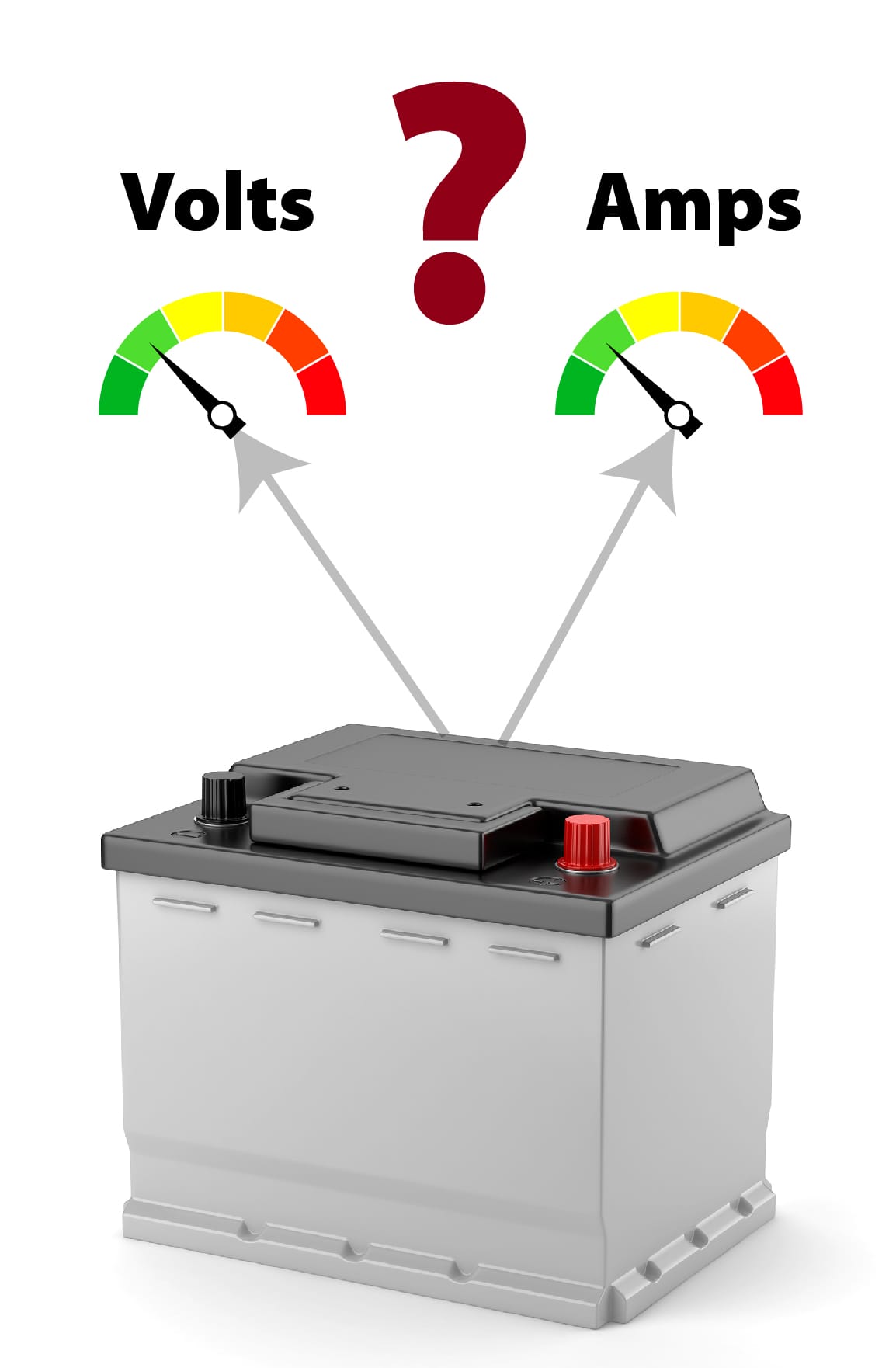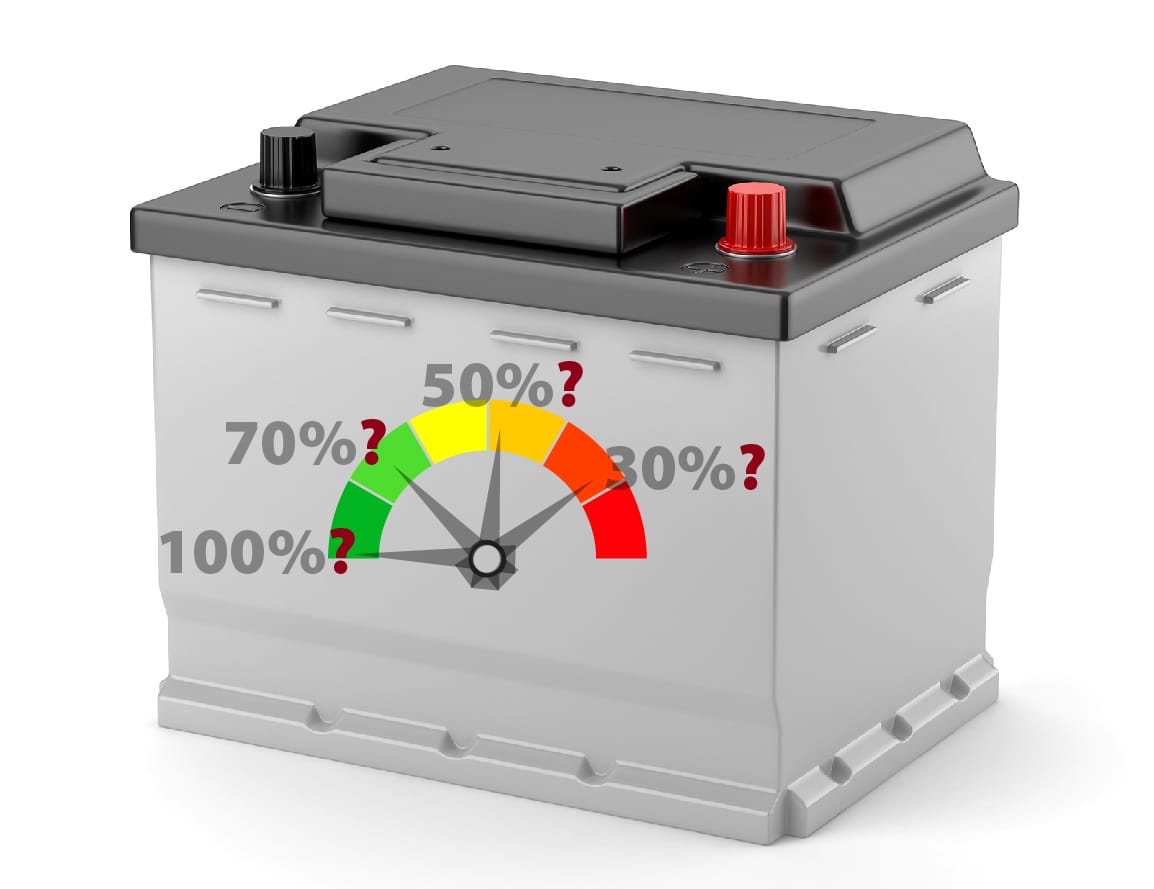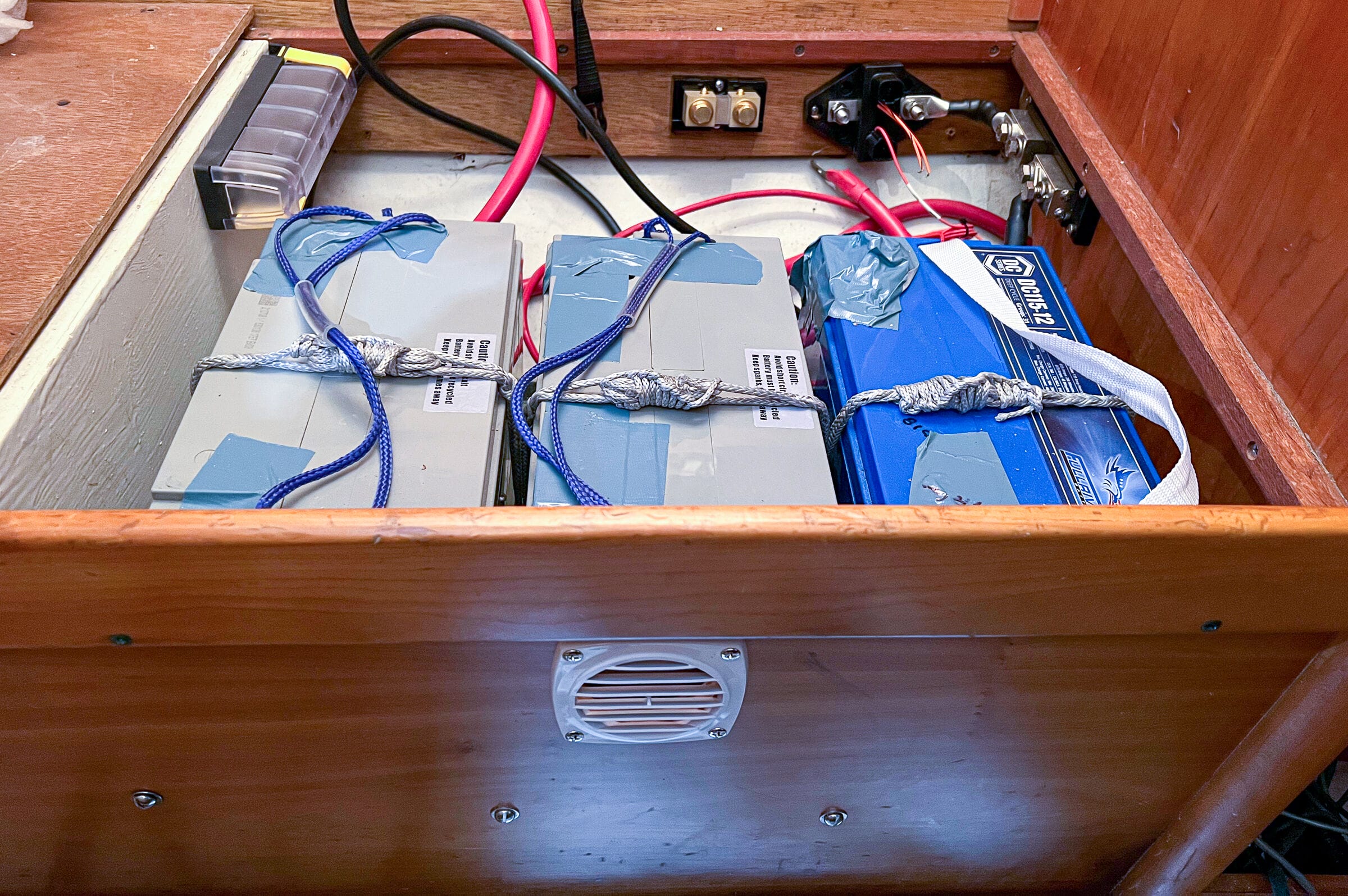Online Book: Electrical Systems For Cruising Boats

How to get the very best from a cruising boat electrical system—real information that works based on 25 years of live-aboard experience. John is also an electronics technician by trade, so doubly qualified to provide practical and reliable information.
Click for TOC or scroll down for details
Articles in this topic:
- Why Most New-To-Us Boat Electrical Systems Must Be Rebuilt
- One Simple Law That Makes Electrical Systems Easy to Understand
- How Batteries Charge (Multiple Charging Sources Too)
- 5 Safety Tips For Working on Boat DC Electrical Systems
- 7 Checks To Stop Our DC Electrical System From Burning Our Boat
- Cruising Boat Electrical System Design, Part 1—Loads and Conservation
- Cruising Boat Electrical System Design, Part 2—Thinking About Systems
- Cruising Boat Electrical System Design, Part 3—Specifying Optimal Battery Bank Size
- Balancing Battery Bank and Solar Array Size
- The Danger of Voltage Drops From High Current (Amp) Loads
- Should Your Boat’s DC Electrical System Be 12 or 24 Volt?—Part 1
- Should Your Boat’s DC Electrical System Be 12 or 24 Volt?—Part 2
- Battery Bank Separation and Cross-Charging Best Practices
- Choosing & Installing Battery Switches
- Cross-Bank Battery Charging—Splitters and Relays
- Cross-Bank Battery Charging—DC/DC Chargers
- 10 Tips To Install An Alternator
- Stupid Alternator Regulators Get Smarter…Finally
- WakeSpeed WS500—Best Alternator Regulator for Lead Acid and Lithium Batteries
- AC Chargers For Lead Acid Batteries
- Replacing Diesel-Generated Electricity With Renewables, Part 1—Loads and Options
- Replacing Diesel-Generated Electricity With Renewables, Part 2—Case Studies
- Efficient Generator-Based Electrical Systems For Yachts
- Battery Bank Size and Generator Run Time, A Case Study
- A Simple Way to Decide Between Lithium or Lead-Acid Batteries for a Cruising Boat
- Eight Steps to Get Ready For Lithium Batteries
- Why Lithium Battery Load Dumps Matter
- 8 Tips To Prevent Lithium Battery Black Outs
- Building a Seamanlike Lithium Battery System
- Lithium Batteries Buyer’s Guide—BMS Requirements
- Lithium Batteries Buyer’s Guide—Balancing and Monitoring
- Lithium Batteries Buyer’s Guide—Current (Amps) Requirements and Optimal Voltage
- Lithium Battery Buyer’s Guide—Fusing
- Lithium Buyer’s Guide—Budget: High End System
- Lithium Buyer’s Guide—Budget: Economy Options
- 10 Reasons Why Hybrid Lithium Lead-Acid Systems are a Bad Idea
- 11 Steps To Better Lead Acid Battery Life
- How Hard Can We Charge Our Lead-Acid Batteries?
- How Lead Acid Batteries Get Wrecked and What To Do About It
- Equalizing Batteries, The Reality
- Renewable Power
- Wind Generators
- Solar Power
- Watt & Sea Hydrogenerator Buyer’s Guide—Cost Performance
- Battery Monitors, Part 1—Which Type Is Right For You?
- Battery Monitors, Part 2—Recommended Unit
- Battery Monitors, Part 3—Calibration and Use
- Battery Containment—Part 1
- Electrical Tips
-
Why Most New-To-Us Boat Electrical Systems Must Be Rebuilt
107 CommentsReading Time: 6 minutesMembersRead more: Why Most New-To-Us Boat Electrical Systems Must Be RebuiltMost production cruising boats are fitted with inadequate DC electrical systems. Let’s fix that.
-
One Simple Law That Makes Electrical Systems Easy to Understand
53 CommentsReading Time: 6 minutesMembersRead more: One Simple Law That Makes Electrical Systems Easy to UnderstandElectricity, batteries and how to charge them are the source of more confusion in the cruising world than just about anything I can think of. But suppose you could really understand electricity? Now you can, and it’s not hard. Read on.
-
How Batteries Charge (Multiple Charging Sources Too)
96 CommentsReading Time: 6 minutesMembersRead more: How Batteries Charge (Multiple Charging Sources Too)The details of how batteries charge and how voltage regulators work together…or not. Practical information that will help make sure you have electricity when you need it.
-
5 Safety Tips For Working on Boat DC Electrical Systems
23 CommentsReading Time: 4 minutesMembersRead more: 5 Safety Tips For Working on Boat DC Electrical SystemsJust because the battery-supplied systems on cruising boats are low voltage, that does not make them safe. Here are some tips to reduce the chances of a nasty injury.
-
7 Checks To Stop Our DC Electrical System From Burning Our Boat
49 CommentsReading Time: 11 minutesMembersRead more: 7 Checks To Stop Our DC Electrical System From Burning Our BoatIt’s a common misconception that battery-supplied electrical systems are safe because they are low voltage. That’s wrong. In fact, there are high fire risks. Here’s why, and what to do about it.
-
Cruising Boat Electrical System Design, Part 1—Loads and Conservation
59 CommentsReading Time: 10 minutesMembersRead more: Cruising Boat Electrical System Design, Part 1—Loads and ConservationTwo core decisions we must make when designing a cruising boat electrical system for living aboard full time and making offshore voyages, are the size of the battery bank and which charging sources we will need: generator, solar, main engine, wind, etc. But the first thing we need to do, before getting into all that fun stuff, is think about electrical consumption and how to keep it reasonable.
-
Cruising Boat Electrical System Design, Part 2—Thinking About Systems
11 CommentsReading Time: 5 minutesMembersRead more: Cruising Boat Electrical System Design, Part 2—Thinking About SystemsIn the last chapter we looked at some big loads that take electricity from our battery. In this chapter John covers watermakers and diesel furnaces and shows how system thinking can save us from having to install a silly-sized battery bank.
-
Cruising Boat Electrical System Design, Part 3—Specifying Optimal Battery Bank Size
57 CommentsReading Time: 10 minutesMembersRead more: Cruising Boat Electrical System Design, Part 3—Specifying Optimal Battery Bank SizeIn the last two chapters we took a deep and considered dive into analyzing the electrical loads on our boats and thinking about ways to reduce said loads through smart systems thinking. Now we get to the payoff: How to calculate optimal battery bank size or, alternatively, how to live with the battery bank size we already have. I have built a spreadsheet to make the whole process easier.
-
Balancing Battery Bank and Solar Array Size
65 CommentsReading Time: 12 minutesMembersRead more: Balancing Battery Bank and Solar Array SizeIt’s easy to assume that the bigger the battery bank and solar array the better, but there’s a much better way to optimize the system for a live-aboard cruising boat, which will save a bundle of money too.
-
The Danger of Voltage Drops From High Current (Amp) Loads
63 CommentsReading Time: 6 minutesMembersRead more: The Danger of Voltage Drops From High Current (Amp) LoadsThese days we are seeing more and more gear added to boats, much of it AC supplied through inverters from the battery, that demands current (amperage) way higher than even dreamed of a decade ago. But will our electrical system buckle under the load? Here’s how to figure that out ahead of time.
-
Should Your Boat’s DC Electrical System Be 12 or 24 Volt?—Part 1
81 CommentsReading Time: 7 minutesMembersRead more: Should Your Boat’s DC Electrical System Be 12 or 24 Volt?—Part 1So which is better, 12 or 24-volt DC systems for live-aboard cruising? Like most things, it depends. Here’s a definitive way to determine which is best for your boat and usage.
-
Should Your Boat’s DC Electrical System Be 12 or 24 Volt?—Part 2
66 CommentsReading Time: 7 minutesMembersRead more: Should Your Boat’s DC Electrical System Be 12 or 24 Volt?—Part 2In Part 1 we learned that it was inefficient, and often impossible, as well as potentially dangerous, to supply the high-load equipment, that so many cruisers seem to want, with a 12-volt system. And, further, that the solution to this problem is either to forgo all very high-current (amperage) gear, or select a boat with a 24-volt system. So let’s look at that.
-
Battery Bank Separation and Cross-Charging Best Practices
16 CommentsReading Time: 4 minutesMembersRead more: Battery Bank Separation and Cross-Charging Best PracticesWe all know that any cruising boat should have the engine and house banks separated, but that’s just the start of what we need to know.
-
Choosing & Installing Battery Switches
63 CommentsReading Time: 10 minutesMembersRead more: Choosing & Installing Battery SwitchesSelecting battery master switches and deciding how to wire them is a fundamental part of a good cruising live-aboard electrical system.
-
Cross-Bank Battery Charging—Splitters and Relays
23 CommentsReading Time: 9 minutesMembersRead more: Cross-Bank Battery Charging—Splitters and RelaysA well set up cruising boat electrical system separates the house and engine start batteries. Here’s how to make sure both are properly charged.
-
Cross-Bank Battery Charging—DC/DC Chargers
64 CommentsReading Time: 6 minutesMembersRead more: Cross-Bank Battery Charging—DC/DC ChargersCross-bank battery charging with DC/DC chargers or alternator-to-battery chargers.
-
10 Tips To Install An Alternator
181 CommentsReading Time: 7 minutesMembersRead more: 10 Tips To Install An AlternatorHow to buy and install a real live-aboard cruiser’s alternator that will be reliable over the long term.
-
Stupid Alternator Regulators Get Smarter…Finally
93 CommentsReading Time: 5 minutesMembersRead more: Stupid Alternator Regulators Get Smarter…FinallyOne of the biggest snow jobs in boat gear sales is the myth of the smart three-stage alternator regulator. In fact, the alternator regulators that have been available to us cruisers for about the last 15 years are not that bright…OK, they’re downright stupid. But, finally, we now have a truly smart regulator. John takes a look and comes away impressed.
-
WakeSpeed WS500—Best Alternator Regulator for Lead Acid and Lithium Batteries
61 CommentsReading Time: 9 minutesMembersRead more: WakeSpeed WS500—Best Alternator Regulator for Lead Acid and Lithium BatteriesThe WS500 alternator regulator was a great option for cruisers a year ago. It’s even better now. Here’s why.
-
AC Chargers For Lead Acid Batteries
31 CommentsReading Time: 4 minutesMembersRead more: AC Chargers For Lead Acid BatteriesMost marine battery chargers are, in fact, battery killers. Yes, that includes most of the fancy three stage units we all pay so much money for. Here’s why and what to do about it.
-
Replacing Diesel-Generated Electricity With Renewables, Part 1—Loads and Options
36 CommentsReading Time: 8 minutesMembersRead more: Replacing Diesel-Generated Electricity With Renewables, Part 1—Loads and OptionsCan we replace diesel fuel generation (main engine or separate) with wind, solar and/or hydrogenerators? Yes, but there’s stuff to know to avoid wasted money and disappointment.
-
Replacing Diesel-Generated Electricity With Renewables, Part 2—Case Studies
50 CommentsReading Time: 10 minutesMembersRead more: Replacing Diesel-Generated Electricity With Renewables, Part 2—Case StudiesSo far in this series of chapters we have been looking at the benefits and drawbacks of the renewable options. Now let’s pull it all together.
-
Efficient Generator-Based Electrical Systems For Yachts
66 CommentsReading Time: 9 minutesMembersRead more: Efficient Generator-Based Electrical Systems For YachtsAn analysis for any live-aboard cruiser who is considering a lifestyle that will require more than about 250 amp-hours at 12 volts (3 kWh) of electricity daily.
-
Battery Bank Size and Generator Run Time, A Case Study
54 CommentsReading Time: 8 minutesMembersRead more: Battery Bank Size and Generator Run Time, A Case StudyThese days, most boats with AC generators have significant DC (12- or 24-volt) battery banks that need to be charged regularly by the generator. But often that process is horribly inefficient. The good news is that the fix is easy, simple, and relatively inexpensive.
-
A Simple Way to Decide Between Lithium or Lead-Acid Batteries for a Cruising Boat
125 CommentsReading Time: 8 minutesFreeRead more: A Simple Way to Decide Between Lithium or Lead-Acid Batteries for a Cruising BoatWith all the claims and counterclaims for the two chemistries, how on earth do we make the right decision? Good news, it’s not hard.
-
Eight Steps to Get Ready For Lithium Batteries
42 CommentsReading Time: 5 minutesMembersRead more: Eight Steps to Get Ready For Lithium BatteriesMany cruisers have already made the jump to lithium. But what if we would like to delay the considerable expense and complications of lithium, but want to be ready at a later date?
-
Why Lithium Battery Load Dumps Matter
101 CommentsReading Time: 8 minutesMembersRead more: Why Lithium Battery Load Dumps MatterLoad dumps are an intrinsic danger with lithium batteries installed on cruising boats. Here’s why, and why we need to fix it.
-
8 Tips To Prevent Lithium Battery Black Outs
112 CommentsReading Time: 6 minutesMembersRead more: 8 Tips To Prevent Lithium Battery Black OutsLoad dumps on a cruising boat are dangerous. Here’s how to prevent them, including some special tips for “drop in” owners.
-
Building a Seamanlike Lithium Battery System
252 CommentsReading Time: 9 minutesMembersRead more: Building a Seamanlike Lithium Battery SystemLithium batteries have many benefits, but are too complicated and fragile, and not fault tolerant enough, to be relied upon exclusively on an offshore boat. Here’s how to fix that.
-
Lithium Batteries Buyer’s Guide—BMS Requirements
94 CommentsReading Time: 10 minutesMembersRead more: Lithium Batteries Buyer’s Guide—BMS RequirementsChoosing the right BMS is the first and most important task when buying a lithium-battery system for an offshore voyaging boat.
-
Lithium Batteries Buyer’s Guide—Balancing and Monitoring
25 CommentsReading Time: 11 minutesMembersRead more: Lithium Batteries Buyer’s Guide—Balancing and MonitoringTo buy the right lithium battery and BMS for our needs, we must first understand cell balancing and required monitoring.
-
Lithium Batteries Buyer’s Guide—Current (Amps) Requirements and Optimal Voltage
80 CommentsReading Time: 11 minutesMembersRead more: Lithium Batteries Buyer’s Guide—Current (Amps) Requirements and Optimal VoltageBefore laying down hard-earned cash for lithium batteries, we need to calculate the peak current we will use and think about optimal voltage.
-
Lithium Battery Buyer’s Guide—Fusing
51 CommentsReading Time: 10 minutesMembersRead more: Lithium Battery Buyer’s Guide—FusingLithium batteries have very low internal resistance and so we must think carefully when choosing fuses.
-
Lithium Buyer’s Guide—Budget: High End System
33 CommentsReading Time: 10 minutesMembersRead more: Lithium Buyer’s Guide—Budget: High End SystemSo far in this buyer’s guide, we have covered the technical aspects of upgrading our offshore cruising boat to lithium. Now let’s compare three relatively high-cost options and the cost and benefits of each.
-
Lithium Buyer’s Guide—Budget: Economy Options
43 CommentsReading Time: 9 minutesMembersRead more: Lithium Buyer’s Guide—Budget: Economy OptionsIn the last chapter we examined an ideal fully integrated lithium system at a big price, now let’s see if we can save some money without sacrificing too much.
-
10 Reasons Why Hybrid Lithium Lead-Acid Systems are a Bad Idea
29 CommentsReading Time: 5 minutesMembersRead more: 10 Reasons Why Hybrid Lithium Lead-Acid Systems are a Bad IdeaI have been frequently asked for my thoughts on systems where lithium and lead-acid batteries are connected in parallel. Here you go.
-
11 Steps To Better Lead Acid Battery Life
76 CommentsReading Time: 4 minutesFreeRead more: 11 Steps To Better Lead Acid Battery LifeIn the last chapter, we quantified how short battery life will be on a cruising boat with a standard electrical system, now let’s move on to fixing that.
-
How Hard Can We Charge Our Lead-Acid Batteries?
19 CommentsReading Time: 5 minutesMembersRead more: How Hard Can We Charge Our Lead-Acid Batteries?Charging batteries fast has all kinds of benefits: less engine wear, fuel savings, less carbon. But how far can we go?
-
How Lead Acid Batteries Get Wrecked and What To Do About It
68 CommentsReading Time: 5 minutesMembersRead more: How Lead Acid Batteries Get Wrecked and What To Do About ItRegularly equalizing our lead-acid batteries can save us a lot of money and aggravation by extending their useful lives as much as five times.
-
Equalizing Batteries, The Reality
53 CommentsReading Time: 5 minutesMembersRead more: Equalizing Batteries, The RealityFully charging your batteries after each discharge on a live-aboard cruising sailboat is simply not practical. Instead, most of us will cycle our batteries between 50 and 80% of their capacity. The bad news is that this will ruin your lead-acid batteries (regardless of type) in a distressingly short time due to sulphation. However, there is a solution: equalization. In this chapter we cover what it is and how to do it.
-
Renewable Power
34 CommentsReading Time: 4 minutesMembersRead more: Renewable PowerThrough a combination of planning, frugality, solar and wind power, Colin and Lou have never had to run the engine of their OVNI 435 to charge their batteries when at anchor. How did they manage that? Read on to find out how.
-
Wind Generators
60 CommentsReading Time: 4 minutesMembersRead more: Wind GeneratorsShould you install a wind generator on your boat? Find out from someone who has cruised with one for 5 years—invaluable real-world experience.
-
Solar Power
67 CommentsReading Time: 4 minutesMembersRead more: Solar PowerThere are very few cruising boats these days that don’t have a solar panel fitted somewhere, and many have some pretty substantial arrays. Based on five years of real-world experience, Colin gives some tips and recommendations for how to get the maximum benefit from solar.
-
Watt & Sea Hydrogenerator Buyer’s Guide—Cost Performance
30 CommentsReading Time: 9 minutesMembersRead more: Watt & Sea Hydrogenerator Buyer’s Guide—Cost PerformanceDoes buying a Watt & Sea make sense? It’s complicated, depending on boat size and type, as well as usage profile.
-
Battery Monitors, Part 1—Which Type Is Right For You?
35 CommentsReading Time: 5 minutesMembersRead more: Battery Monitors, Part 1—Which Type Is Right For You?It’s tempting, when selecting a complex piece of gear like a battery monitor, to dive straight into the details and features, but that’s a near-sure route to a bad decision. First let’s take a giant step back and look at the two main types of monitors and decide which is right for each of us.
-
Battery Monitors, Part 2—Recommended Unit
32 CommentsReading Time: 8 minutesMembersRead more: Battery Monitors, Part 2—Recommended UnitBeing able to accurately monitor our batteries is a vital function for all cruisers, but which of the multitude of systems offered should we buy and install? John defines the functions we actually need, and then recommends a monitor.
-
Battery Monitors, Part 3—Calibration and Use
27 CommentsReading Time: 11 minutesMembersRead more: Battery Monitors, Part 3—Calibration and UseThe single biggest bitch we hear about battery monitors is that they are always wrong. John shares how to fix that and make your batteries last a lot longer too.
-
Battery Containment—Part 1
47 CommentsReading Time: 10 minutesMembersRead more: Battery Containment—Part 1Most production boats have battery boxes that are nowhere near strong enough for use on an offshore boat. Let’s fix that.
-
Electrical Tips
0 CommentsReading Time: 2 minutesMembersRead more: Electrical TipsTips relevant to the Electrical Systems for Cruising Boats Online Book


